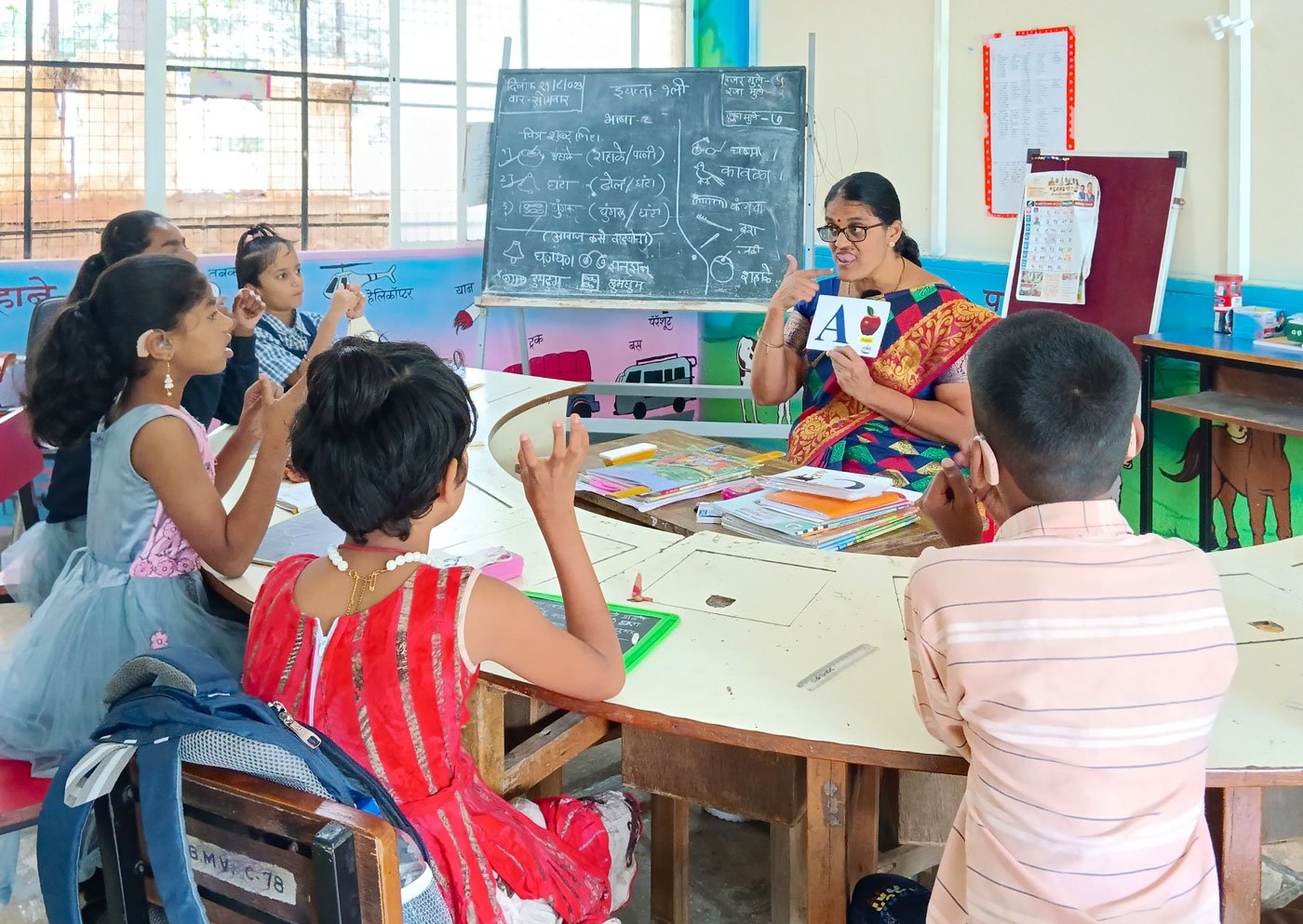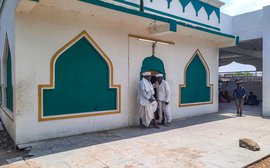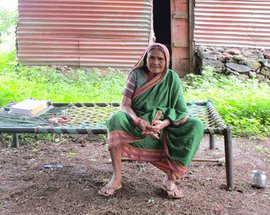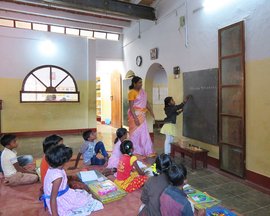“Unconditional love for my students and total acceptance. That is what I have learned as a teacher!”
Medha Tengshe offers her point, gently but firmly. A special educator, she is one of the founding members of Sadhana Village where over 30 people of varying ages and with varying levels of intellectual abilities are taught basic life skills along with some art, music and dance.
Sadhana Village is located in Mulshi block of Pune district. A residential institution for adults with intellectual disabilities, here students are referred to as ‘special friends’ and Medha tai , a journalist by training, defines her role as that of a gruh mata (house mother) to the 10 residents as, “a mother who is also a teacher.”
A feeling that Satyabhama Alhat, a special teacher at the Dhayari School for the Hearing Impaired in Pune agrees with. “A teacher at a residential school like ours is also a parent and we do not want our children to miss home,” she tells PARI as she turns to teach some girls how to play phugadi , a traditional game as it was Nag Panchami, a festival celebrated on the fifth day of Shravan. Dhayari is a primary school with 40 resident students and 12-day scholars who come from parts of Maharashtra, Karnataka, Delhi, West Bengal and Rajasthan among other places.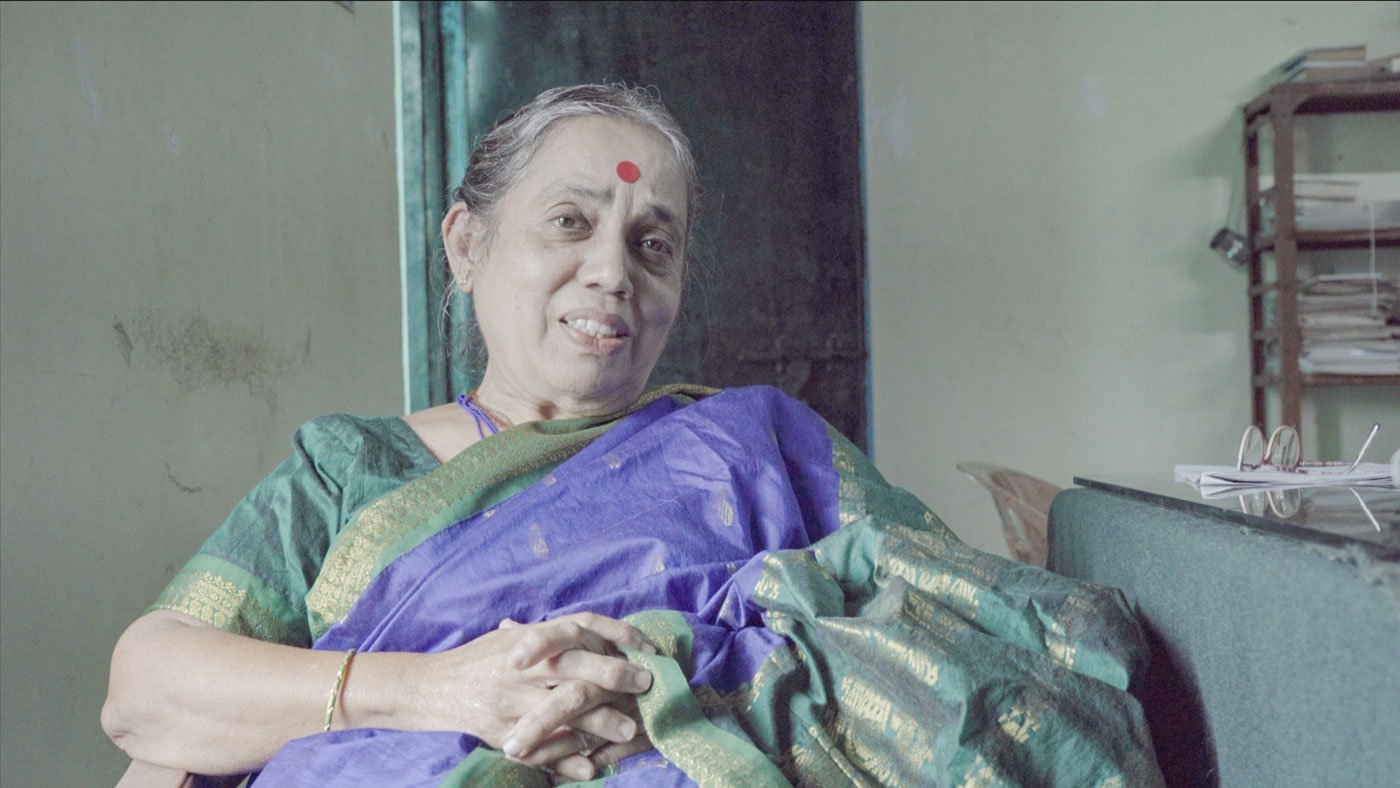
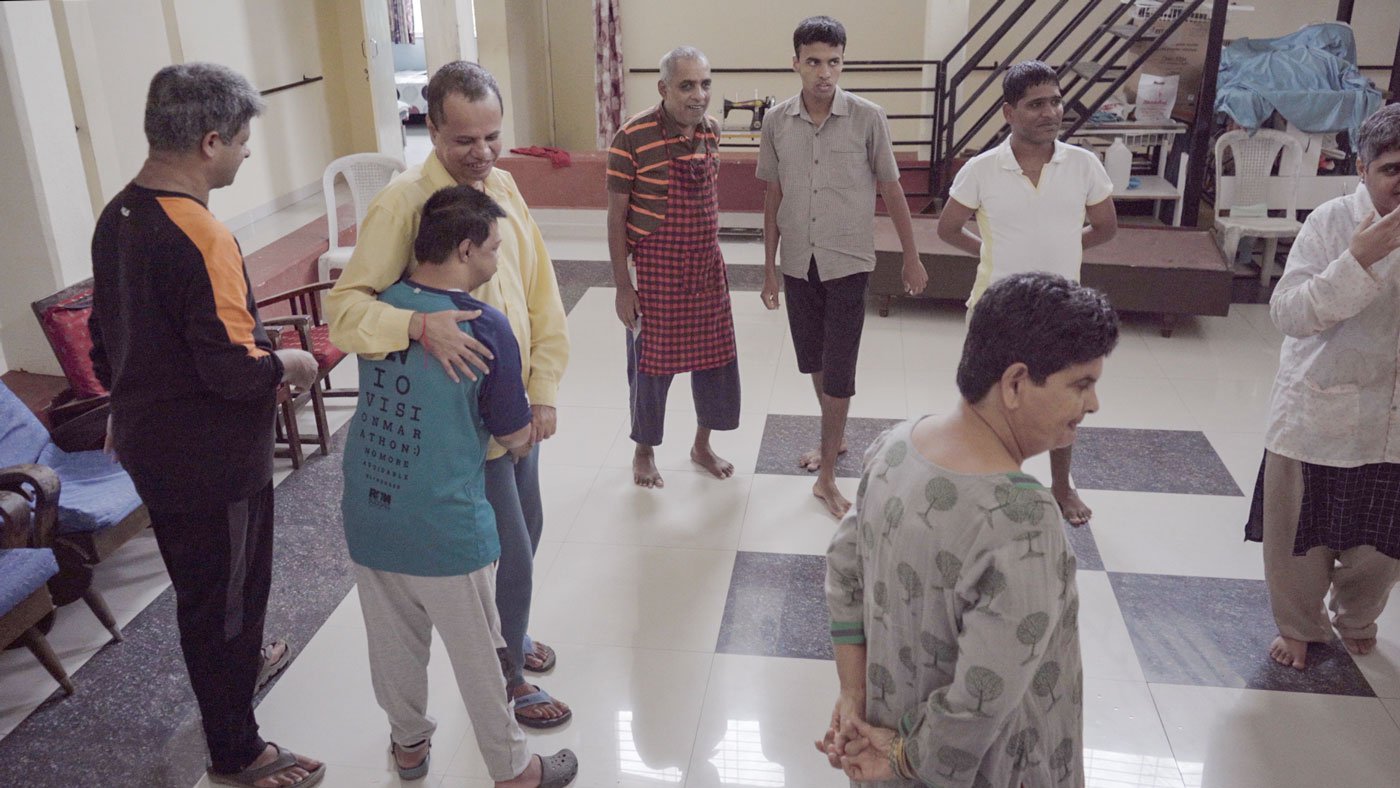
Left: Medha Tengshe, founder member of Sadhana Village says all teachers should visit at least one school for special children to see what can be achieved through gentle words. Right: Kanchan Yesankar says, ‘All the 30 friends here fight but they also love each other’
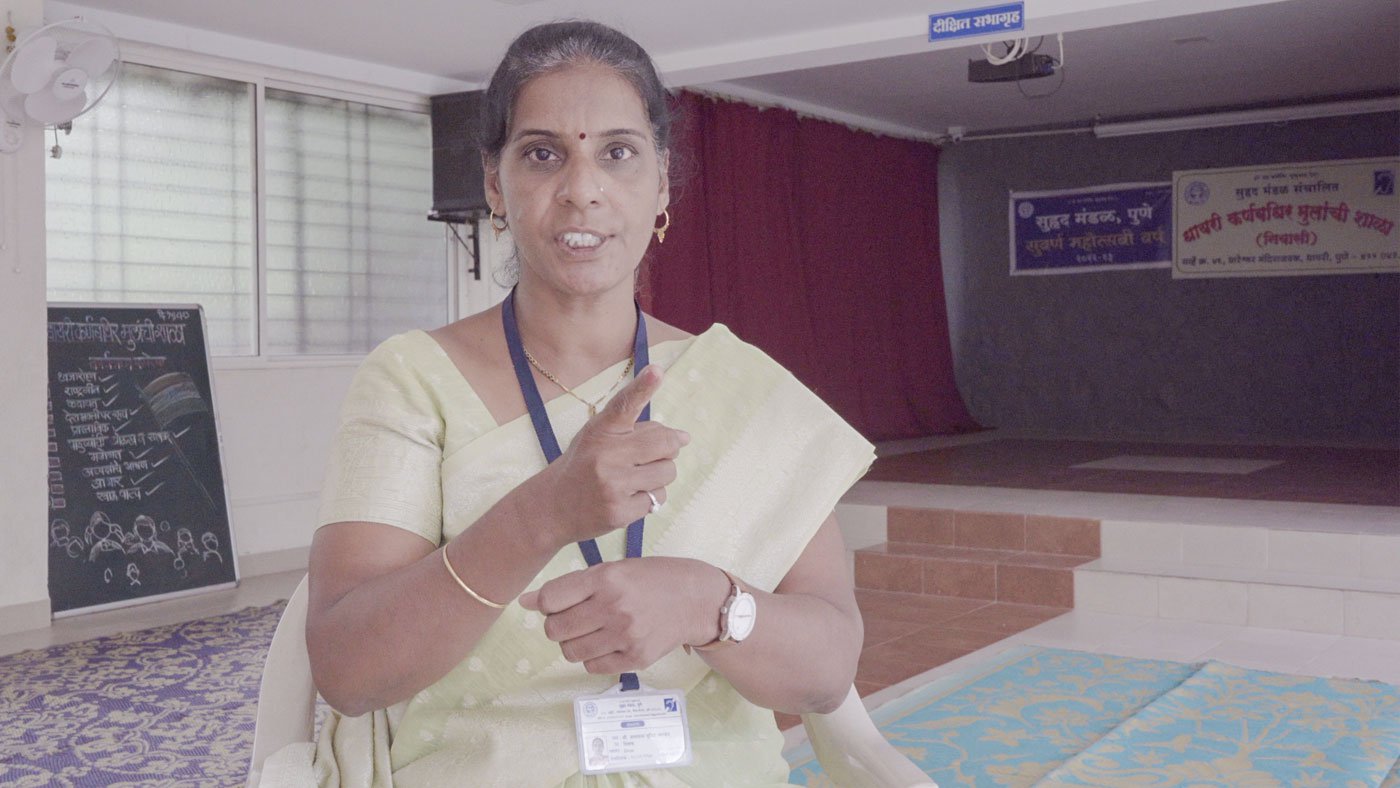
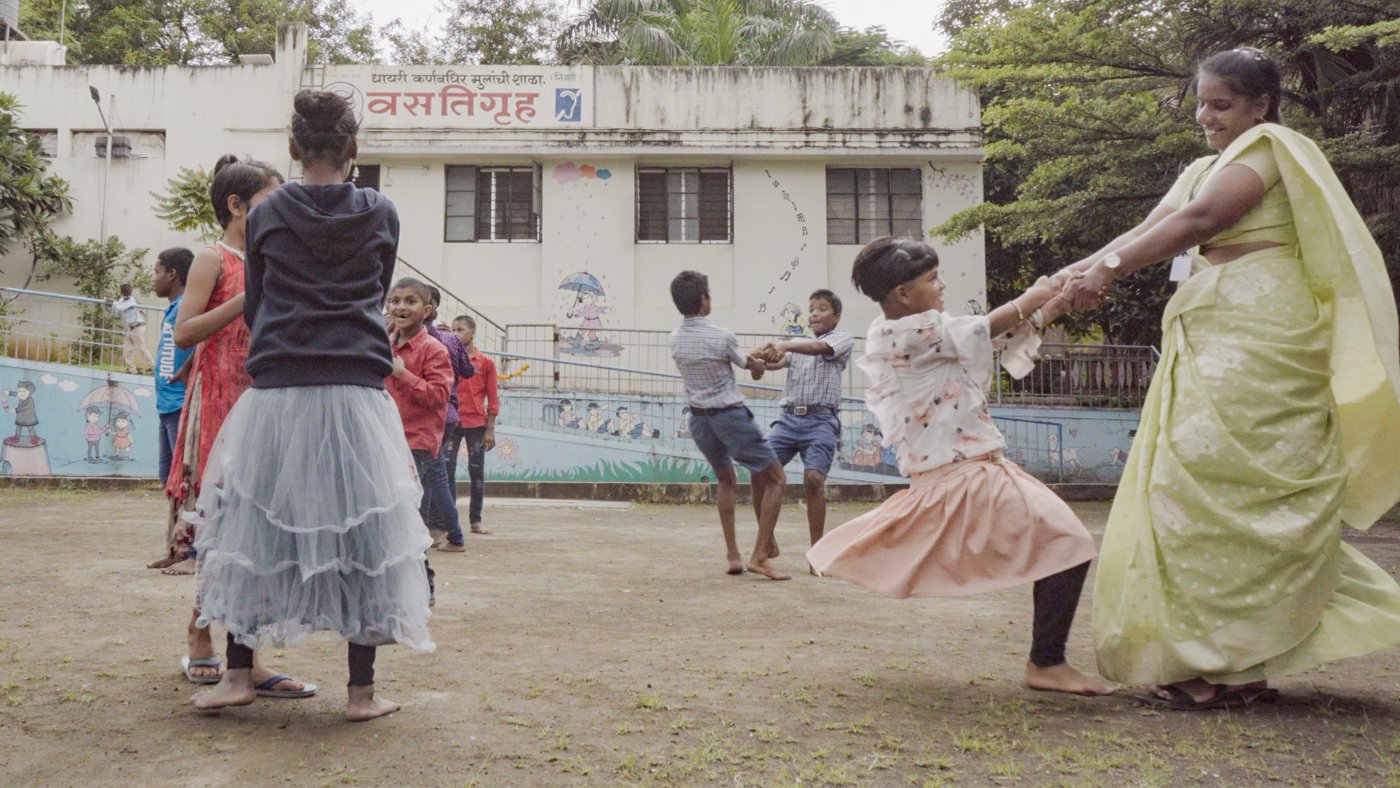
Satyabhama Alhat is a special teacher at the Dhayari School for the Hearing Impaired in Pune . She plays phugadi and other traditional games with girls and boys as they celebrate Nag Panchami. ‘A teacher at a residential school like ours is also a parent,' she says
Satyabhama told PARI that parents prefer to send their children to this school as they have heard good things about the facilities and teachers from students who have moved out. The absence of fees and the residential option make it very attractive – children as young as four and half also join. Interestingly, not all admission enquiries are from hearing impaired. “Parents of hearing children also come and enquire about admissions as they like the school. We have to send them back,” Satyabhama says.
Teachers of people with disabilities are referred to as ‘special educators’ and they educate students in a way that accommodates their individual differences, disabilities and special needs, and makes them self-sufficient. Most of these teachers and educators believe that special education is much more than techniques and methods. It is about the trust and bond between a teacher and child. In 2018-19, Maharashtra noted 3,00,467 children with special needs (CWSN) enrolled in Classes 1 to 12. There are 1,600 special needs schools in Maharashtra.
The 2018 state
policy
for people with disabilities aims to provide at least one special teacher in every school to assist special children in accessing education. But according to Medha
tai
, only nine special educators were appointed in 2018 for the entire Mulshi block with 96 villages.
Teachers of people with disabilities accommodate their individual differences, disabilities and special needs, and makes them self-sufficient
*****
A special educator needs special teaching skills. It’s not easy, “more so, when the students are your parent’s age,” says Rahul Wankhede, a 26-year-old social worker from Wardha who has been here since last year. His senior colleague, Kanchan Yesankar, 27, also from Wardha, has spent five years teaching students who she believes have taught her to be a happier person.
Twenty-year-old Kunal Gujar has borderline intelligence and weakness in his left hand. Community worker, 34-year-old Mayuri Gaikwad and her colleagues conducted classes for him and seven special children. “She taught me songs and tables, and exercise. Haat ase karayche, mag ase, mag tase [Move your hands like this, and then like that],” says Kunal, speaking about his teachers at the Devrai centre in Kalekar wadi of Hadshi, near Pune.
Love and feeling of oneness with these children are a must for this role, says Mayuri who also works with Katkari Adivasi children and runs libraries. She is a farmer and a community worker, and it was her fondness and comfort with children with disabilities made her take on the role of a teacher at the Devrai centre.
Sangita Kalekar’s son Soham suffers from epileptic seizures, and she has been his sole teacher – teaching him everything from sitting up to talking. “He can now say ‘aai, aai’, ” she says. Ten-year-old Soham is playing with a key, watching it fall to the ground and making sounds.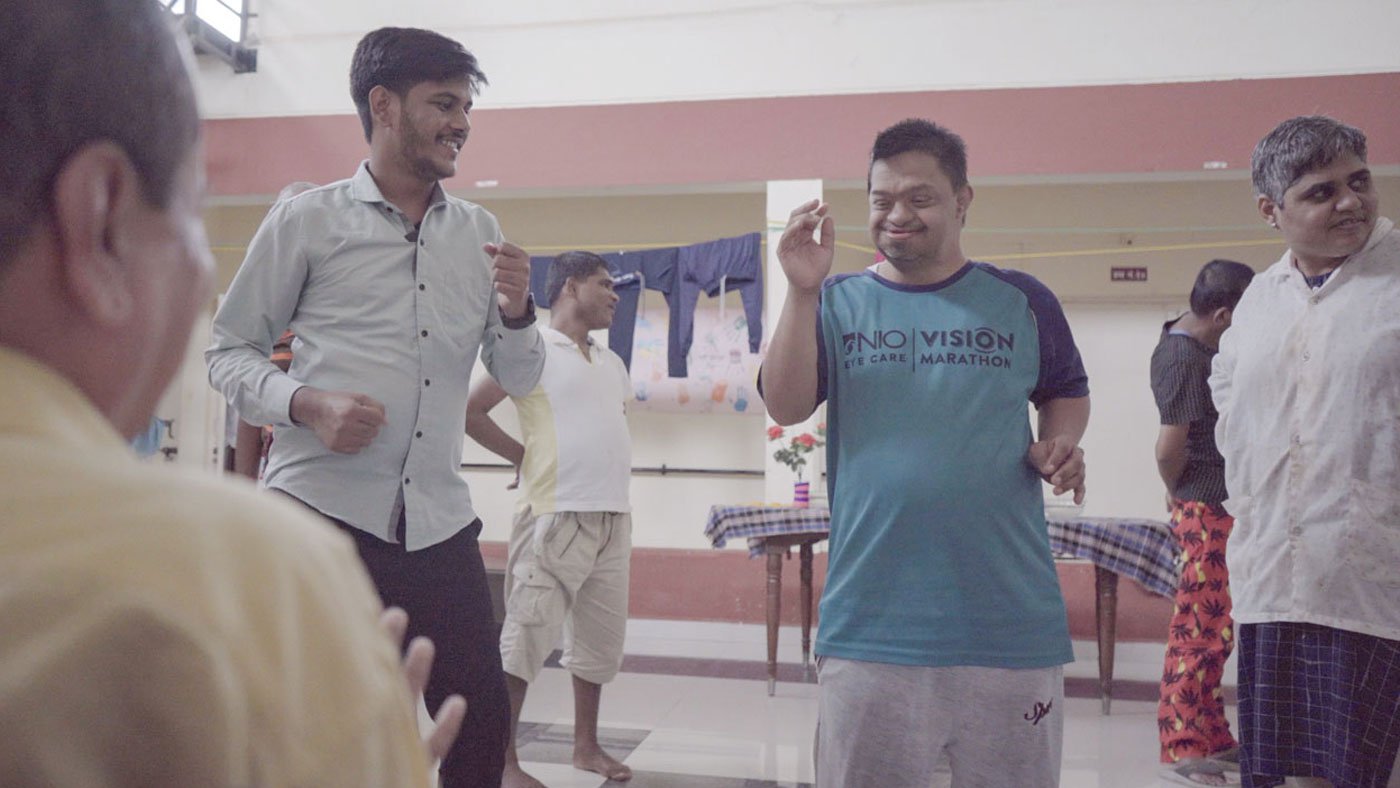
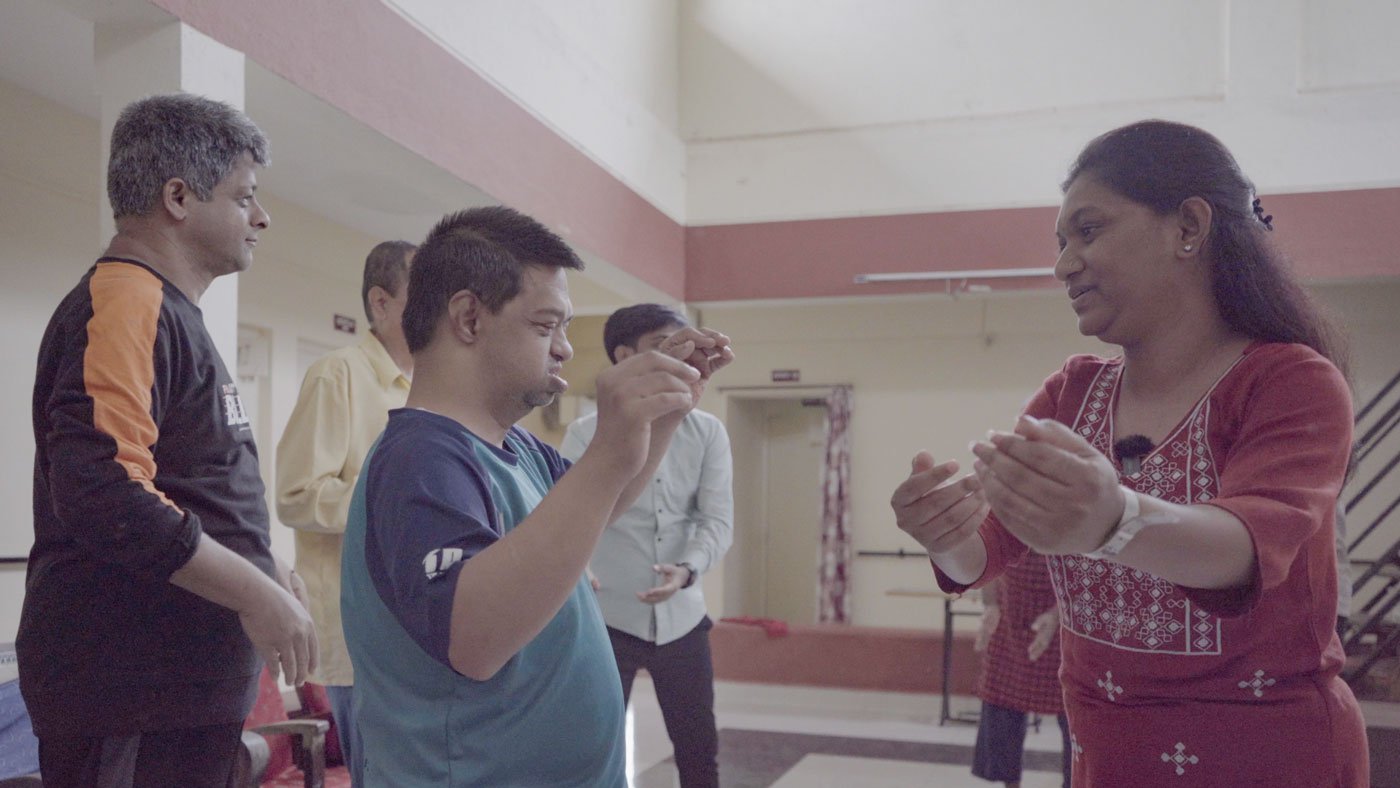
At Sadhana Village, Rahul Wankhede (left) in a dance session with special friends. ‘We have to teach them according to their mood,’ he says. Kanchan Yesankar is a social worker and teacher and is seen here (right) in a dance session. ‘I try to use dance to get my students to be active. I also use many dance therapies,’ she says
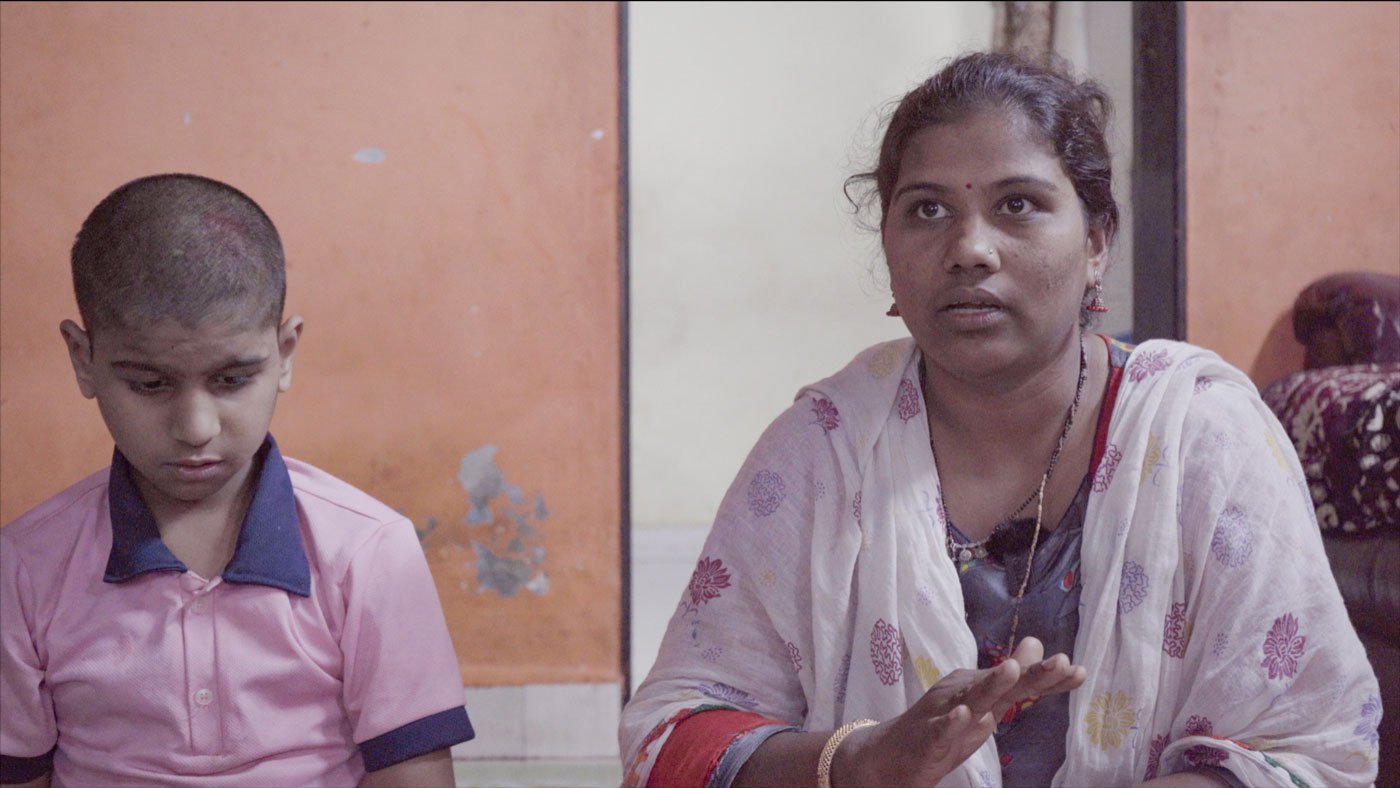
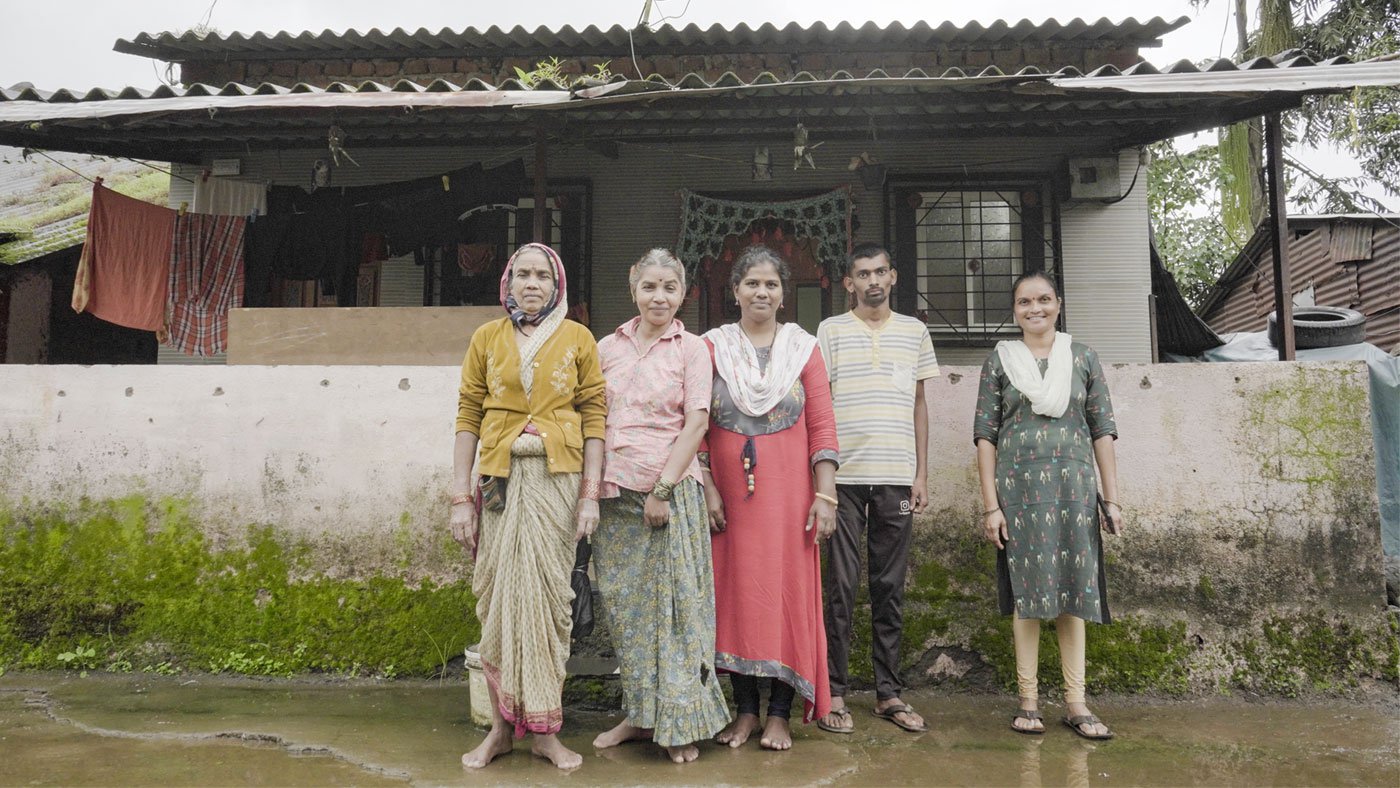
Left: Sangita Kalekar's 10-year-old son Soham has severe epileptic seizures and cannot speak much, but ‘he can now say aai, aai ,’ says his mother. Right: In Hadshi, Phulabai Loyare (far left) with her daughter, Nanda, Sangita Kalekar (in red) with K unal Gujar and Mayuri Gaikwad (far right)
For teachers at another residential institute, the Dhayari School for the Hearing Impaired in Pune, every time a child in their class makes a sound it is one step towards speaking. Apart from these sounds and gestures, “they are no different from ‘normal’ children of their age,” points out Satyabhama Alhat who has been working here for the last 24 years.
The school is one among 38 schools for the hearing impaired started by Suhrud Mandal, a Pune-based institute training special teachers for last 50 years. These teachers have either done a BEd (Hearing Impaired) or diploma courses and have consciously chosen to be special teachers.
The blackboard in the Class 4 classroom is filled with beautiful drawings of a building, a horse, a dog and a pond, all the words Mohan Kanekar wants to teach his students. A trained teacher with 21 years of experience, the 54-year-old follows Total Communication – a method that combines speech, lip-reading, sign and writing while teaching the hearing impaired. His students respond to each sign and try and repeat the words in different notes and tones. The sounds bring a smile to Kanekar’s face, and he corrects the pronunciation of each and every child.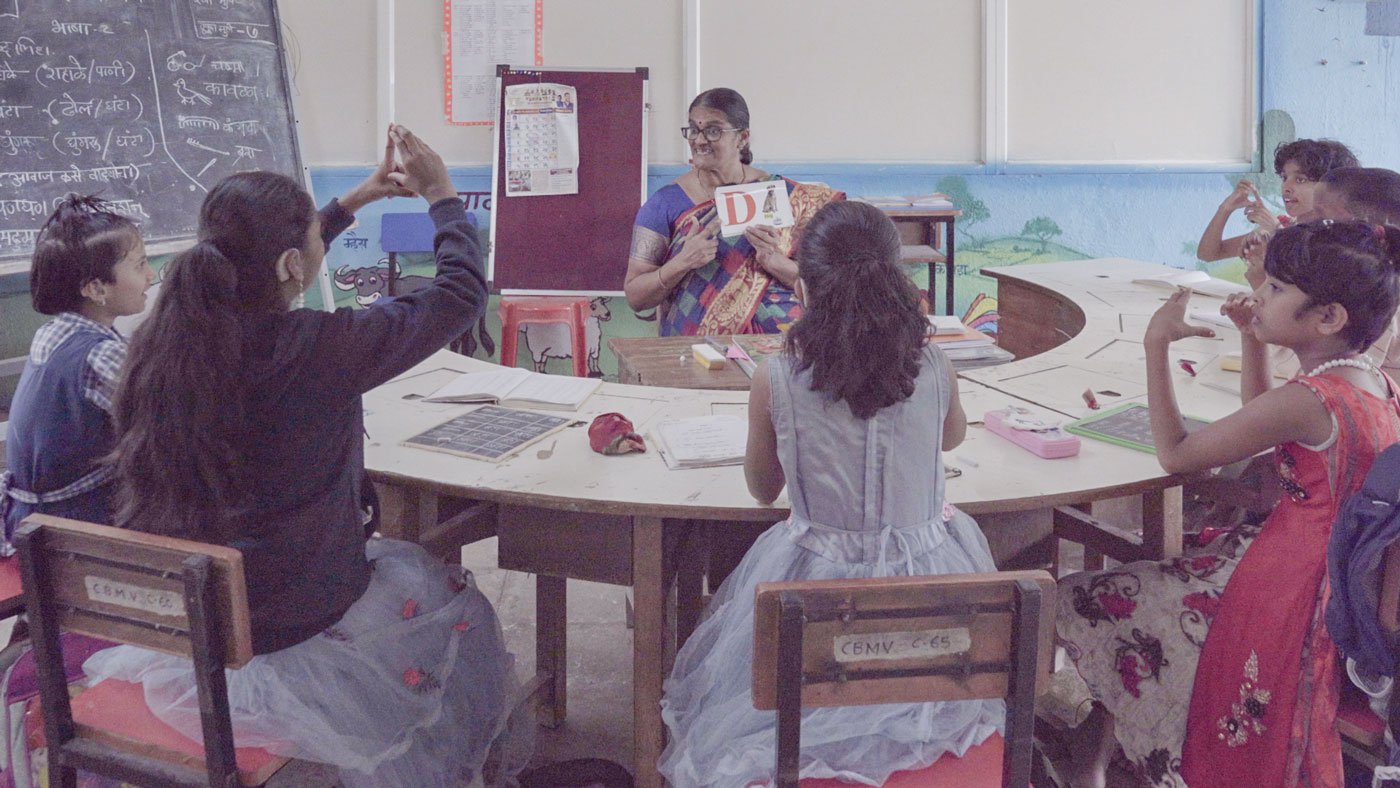
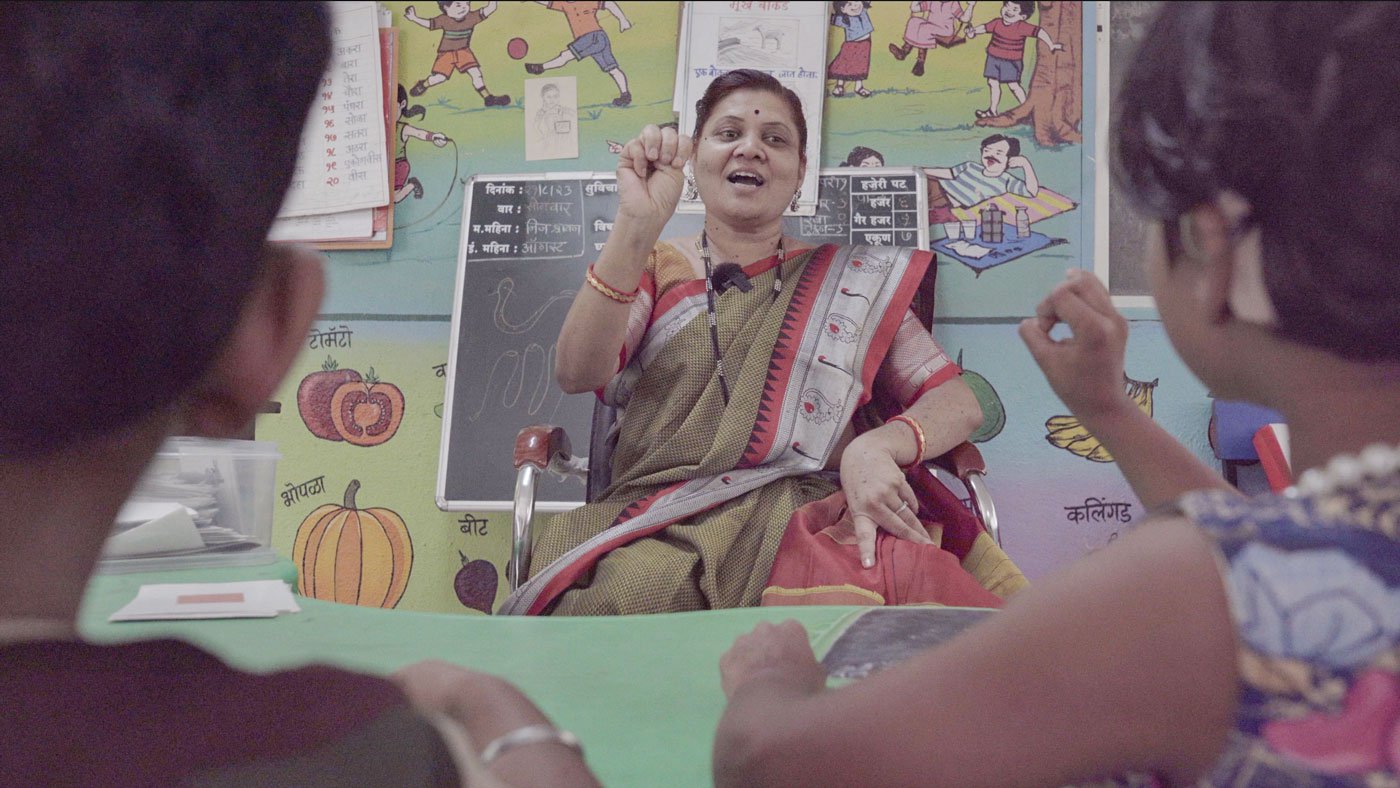
At the Dhayari School for the Hearing Impaired, Aditi Sathe (left) using picture cards . Sunita Zine (right) is the hostel superintendent and is teaching colours and Marathi alphabets to the youngest students
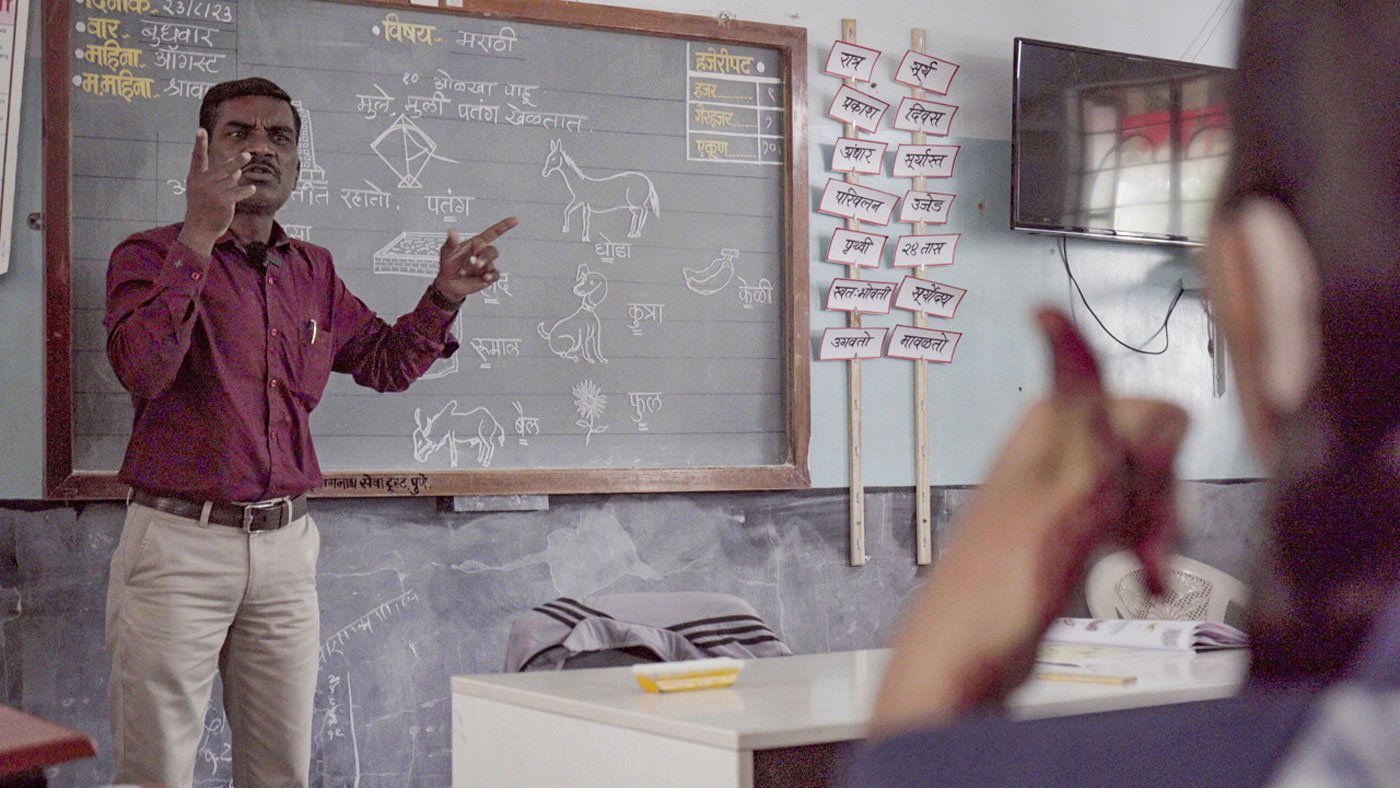
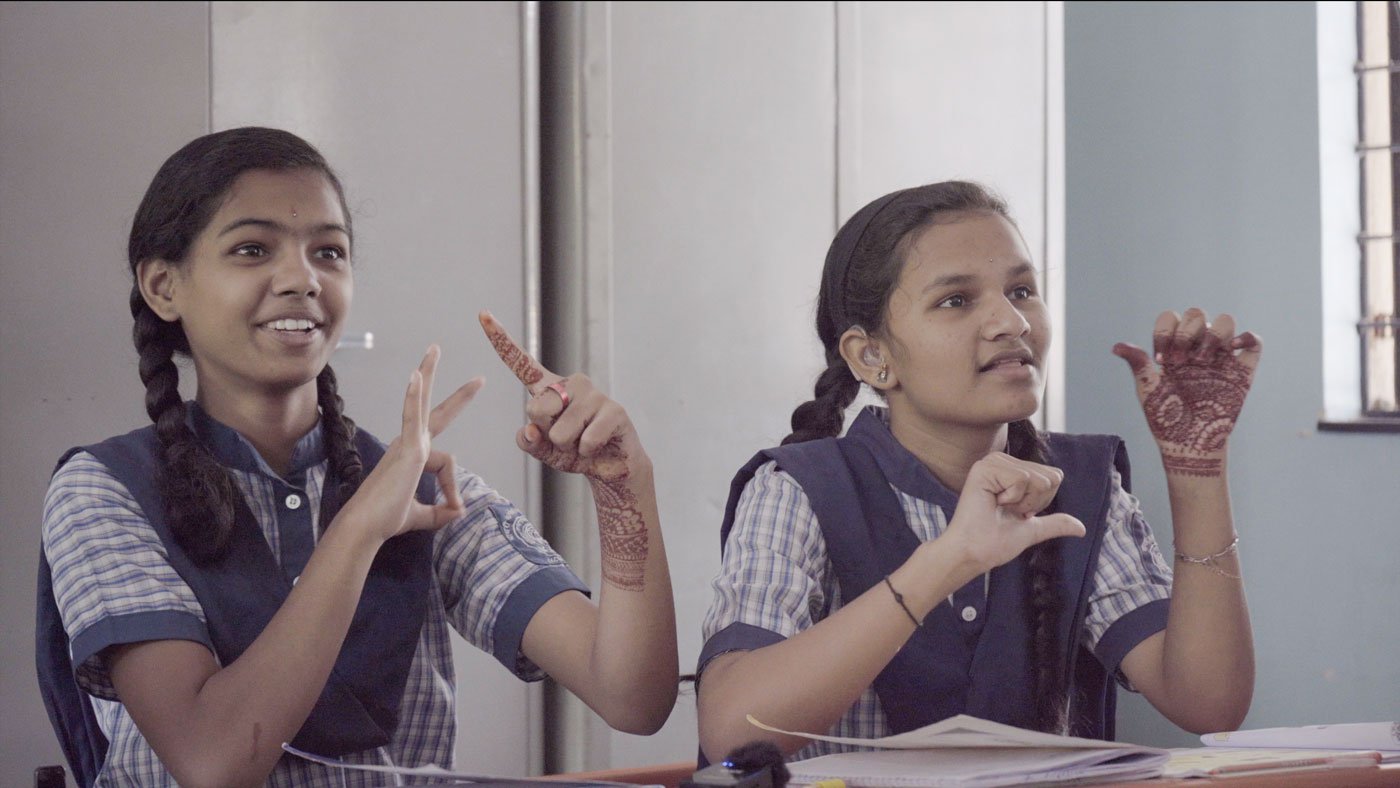
Mohan Kanekar (left) is an experienced special teacher at Dhayari School for the Hearing Impaired. He is teaching Marathi words to Class 4. ‘You have to be good at drawing if you want to teach these students,’ he says. A group of girls (right) in his class following the signs and speech of their teacher
In another class, Aditi Sathe’s own speech impairment does not come in way of teaching seven students in the ‘step 3’ class. She has worked with the school since 1999 as an assistant.
She and her students are not bothered with all the ‘noise’ created by another class in the same hall where Sunita Zine is working with the youngest students who study here. The 47-year-old superintendent of the hostel is teaching colours, and students are running freely in the hall in search of the colours. A blue bag, a red saree, black hair, yellow flowers… students scream in joy, some making sounds, others just with their hands. A trained teacher, her expressive face speaks to her students.
“Today, when there is increasing violence and aggression in society and in schools, we need to question our notions of intelligence and success. Of discipline and punishment,” says Medha tai . She is appealing to all teachers to visit at least one school for special children to see “what can be achieved through gentle words.”
The reporters would like to thank Dr. Anuradha Phatarphod of Suhrud Mandal for all the support while reporting this story.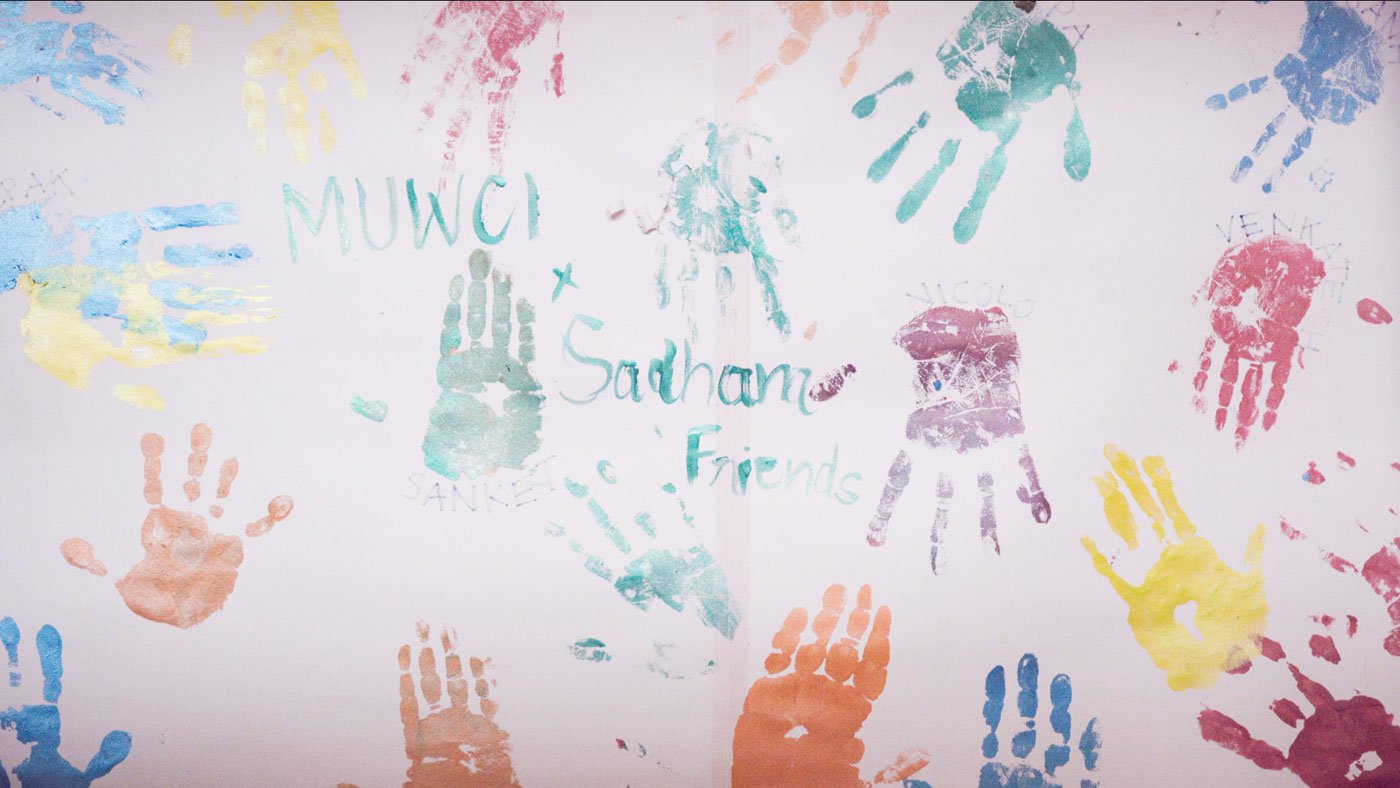
Hand prints on the wall by special friends and volunteers working at Sadhana Village
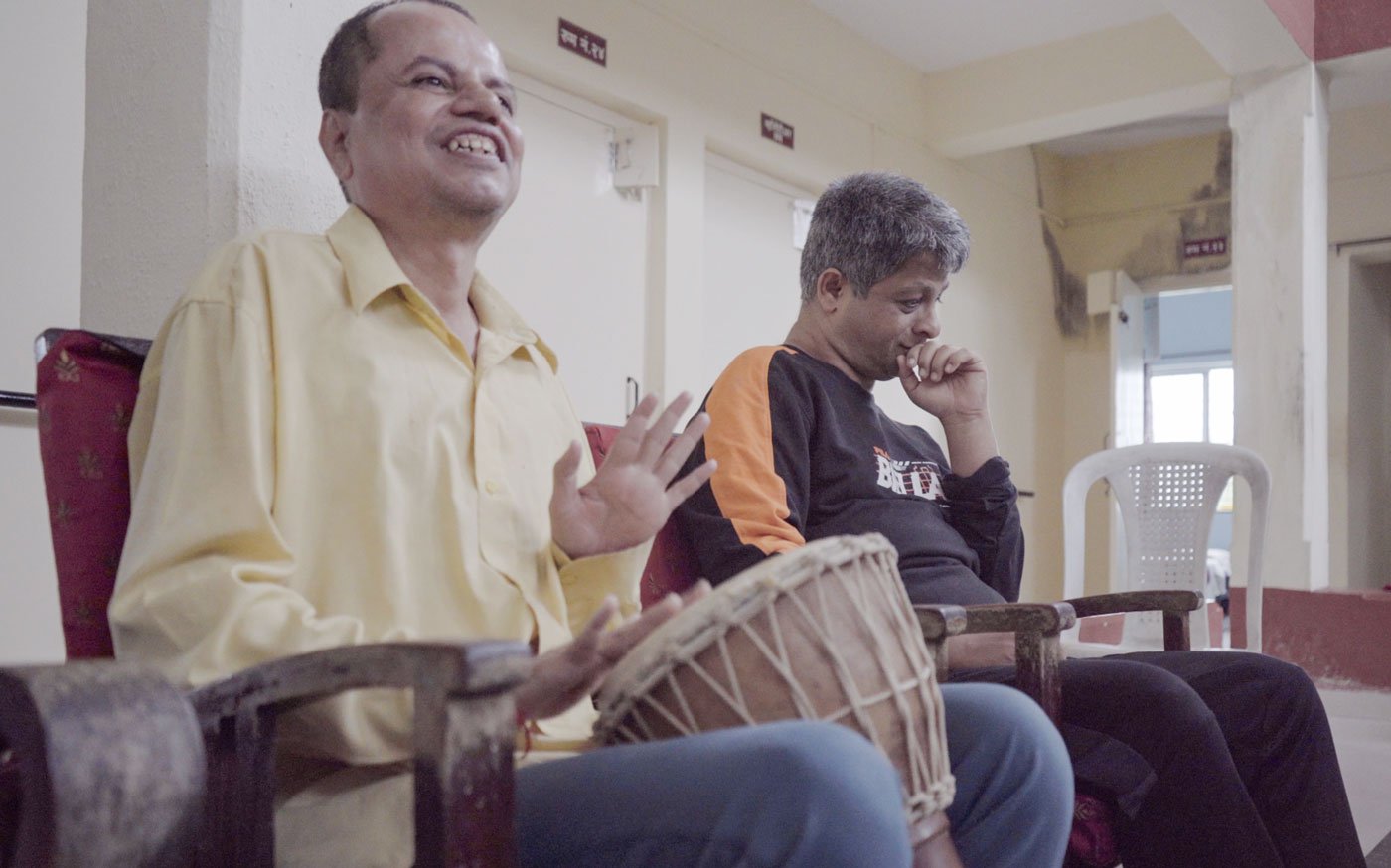
Special friends sharing happy moments with their teachers
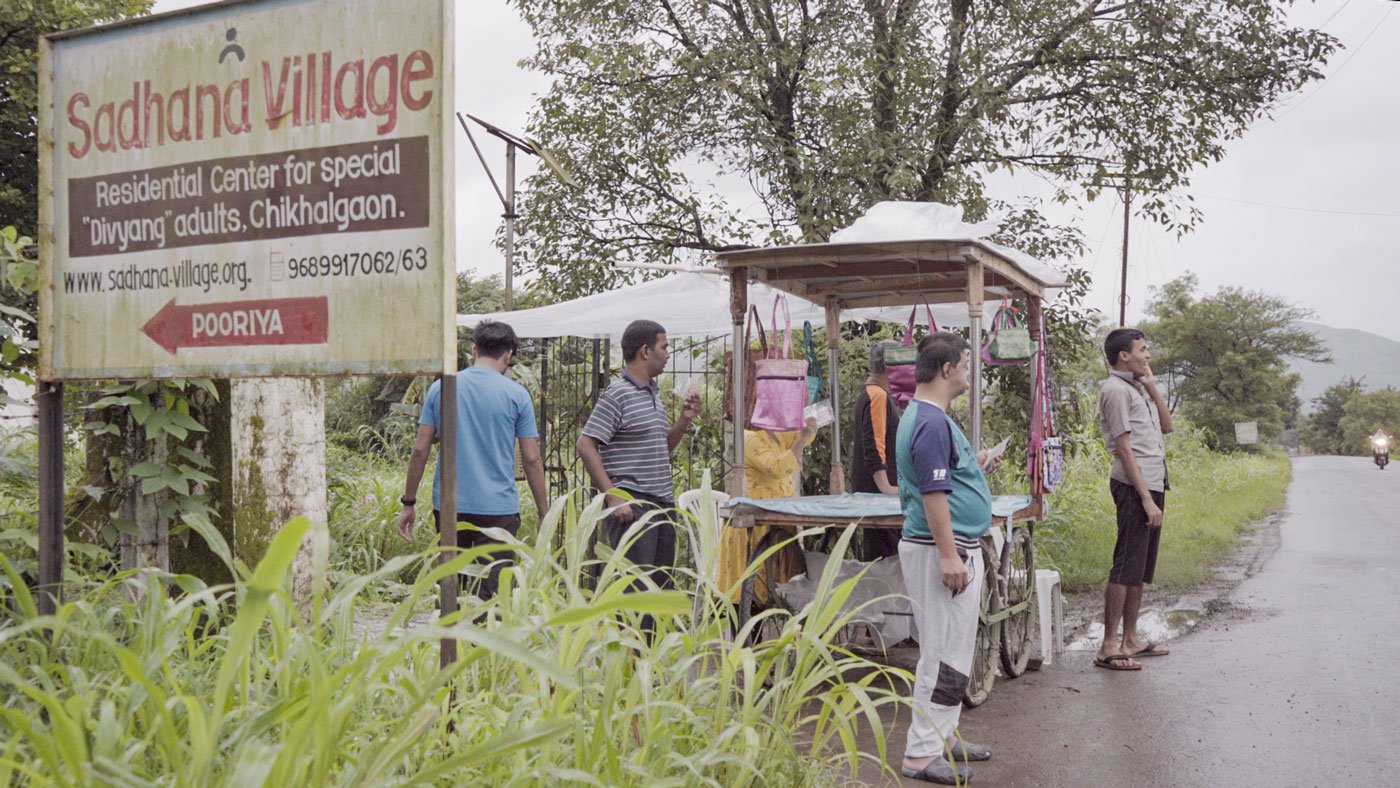
A stall set up by special friends living at Sadhana Village selling rakhi and other handmade items like handbags and pouches made by them. ‘They like to make things with their hands,’ says Kanchan Yesankar, a social worker and teacher
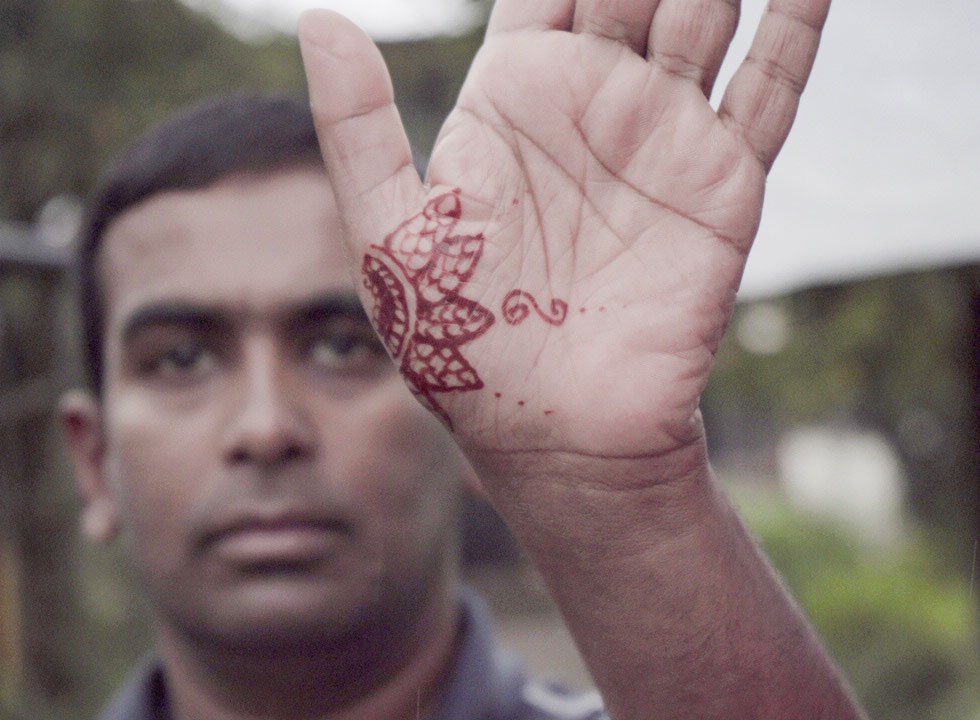
A special friend showing mehendi on his hands on the occasion of Nag Panchami celebrated on the fifth day of Shravan
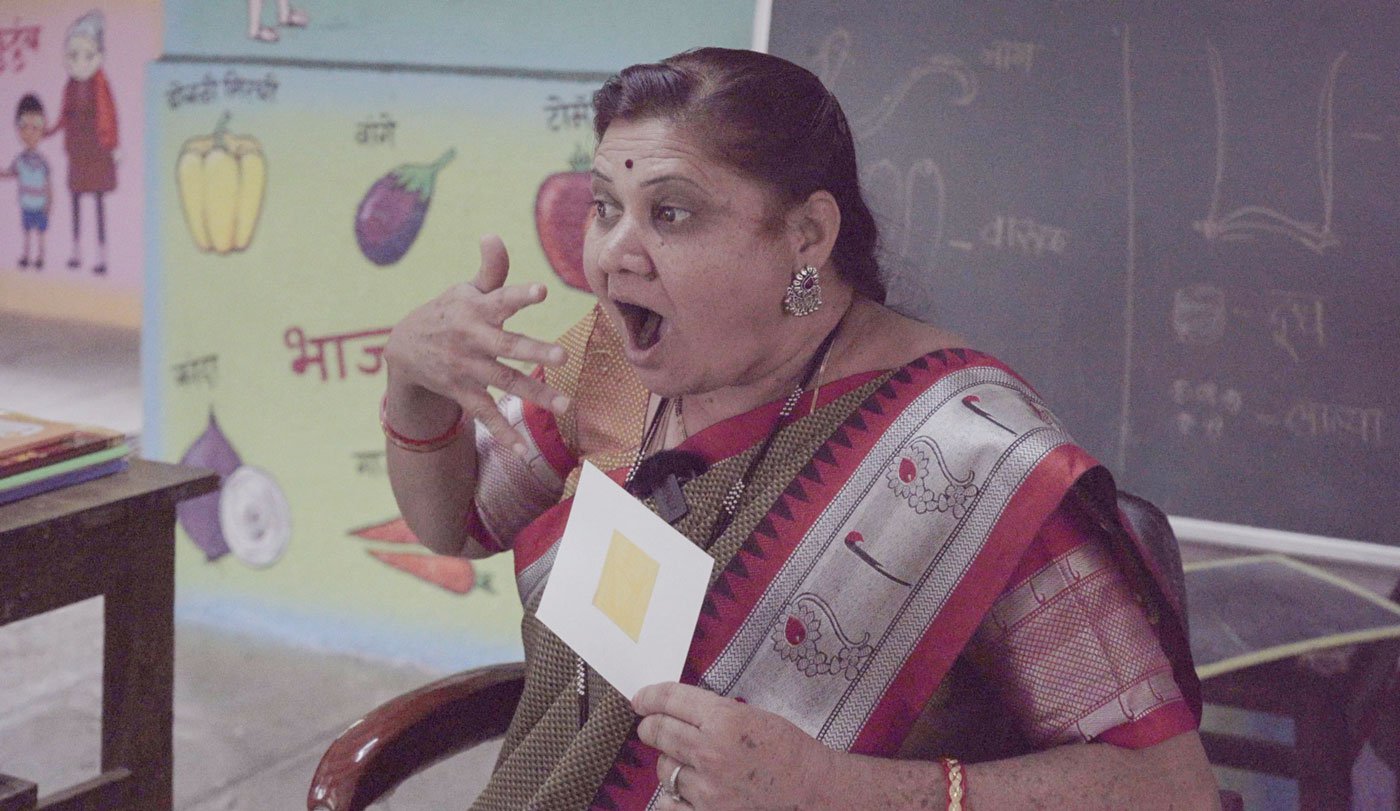
Sunita Zine is a trained special teacher
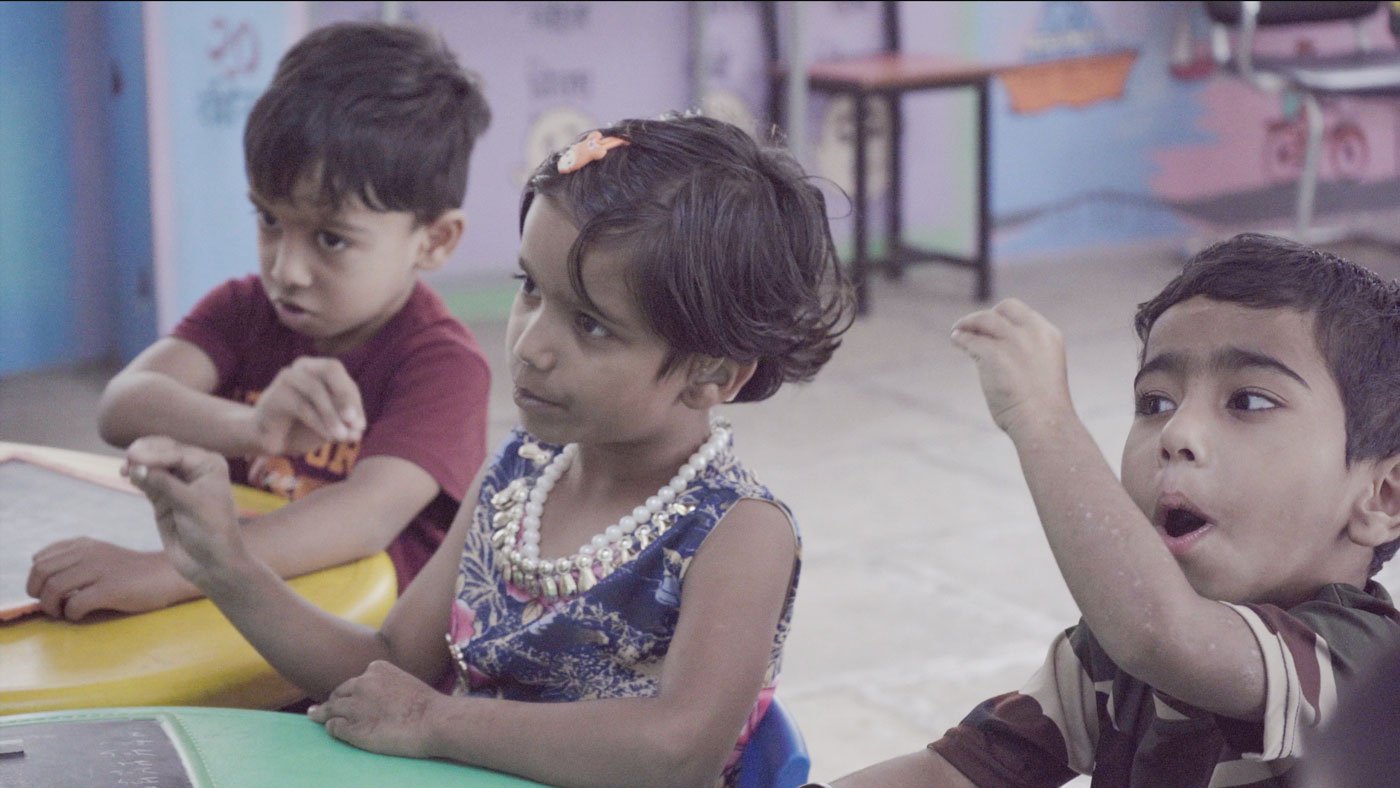
Students learning to make signs for the Marathi alphabet
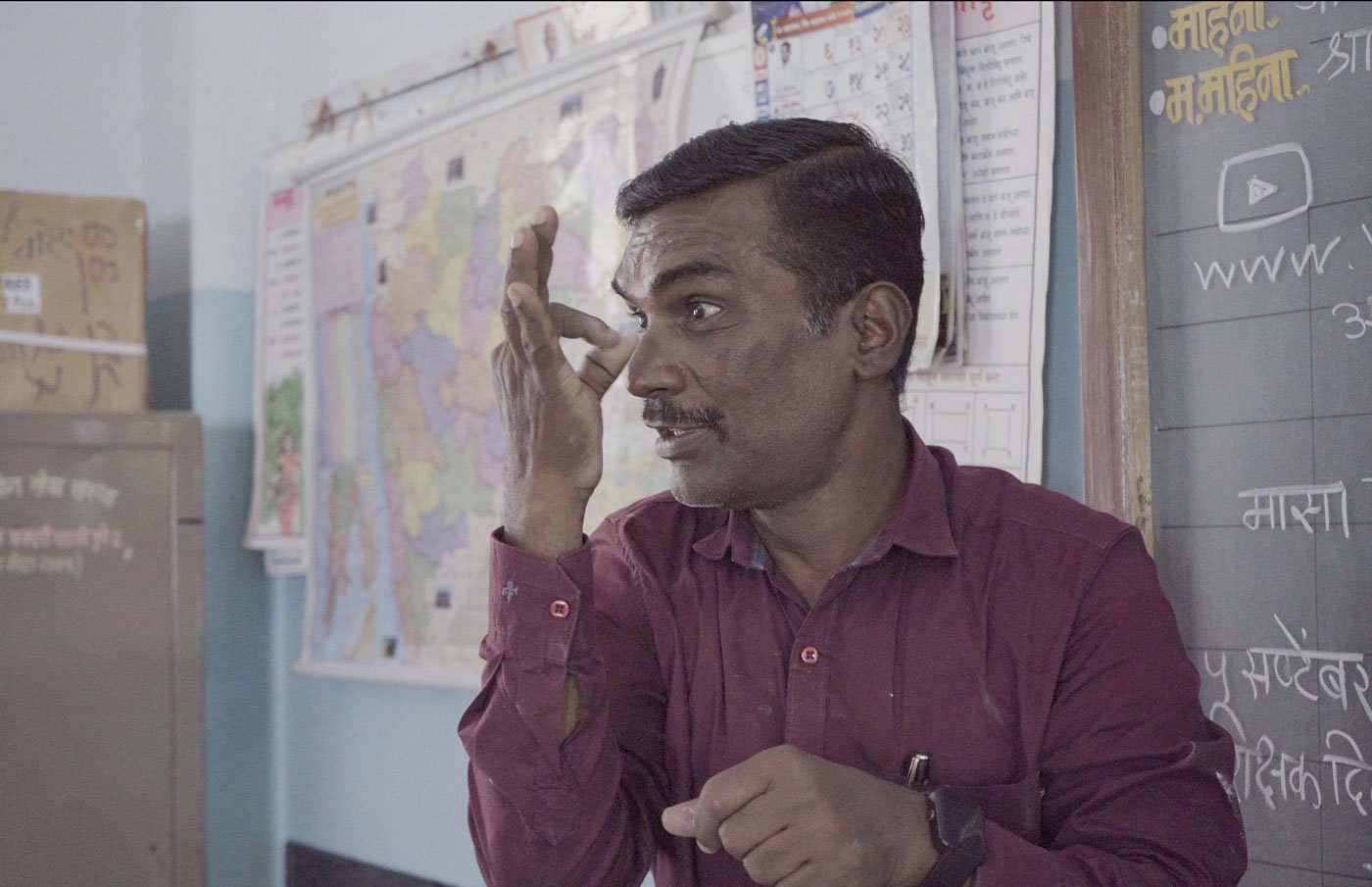
Mohan Kanekar teaching words using Total Communication, a method that combines speech, lip-reading, sign and writing
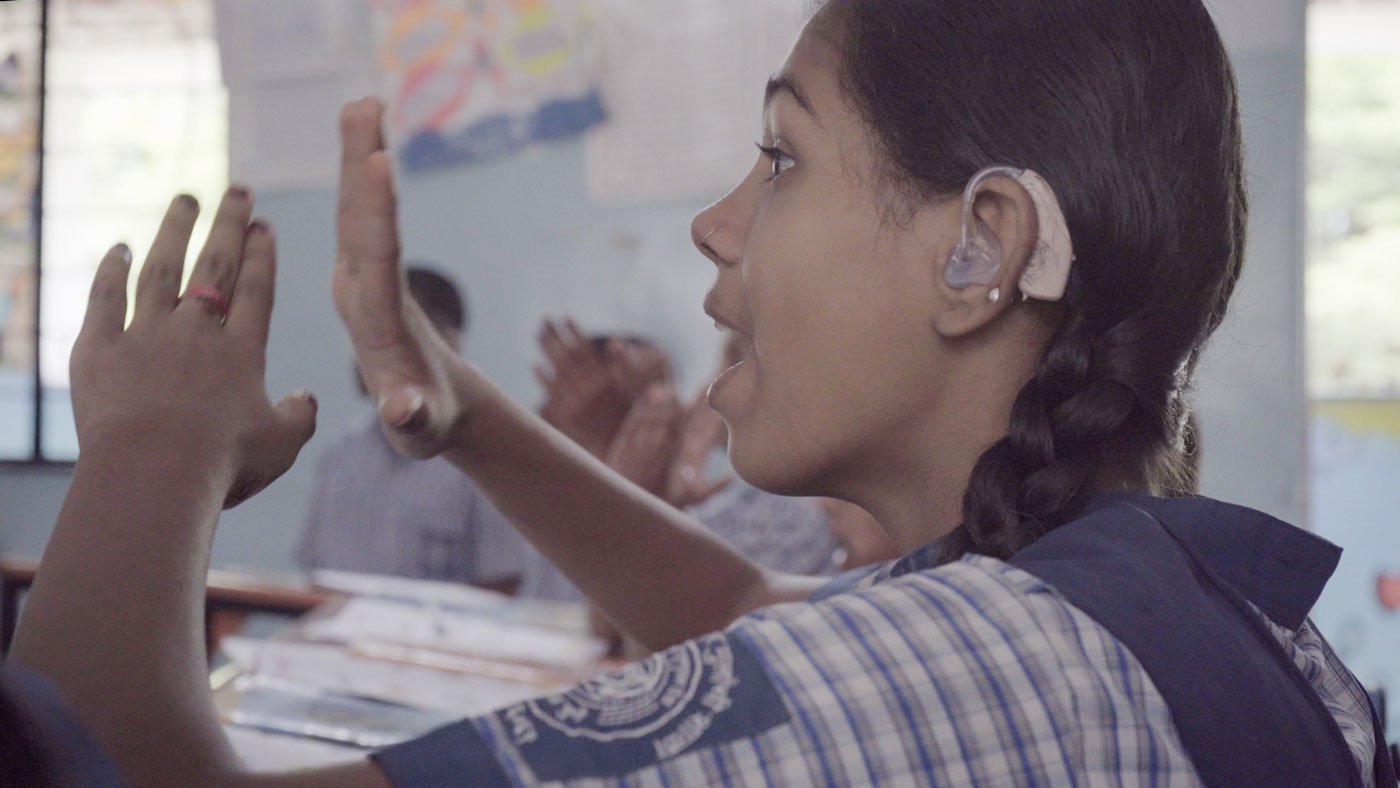
Girls learning signs from their teacher Mohan Kanekar respond to each sign and try and repeat the words in different notes and tones
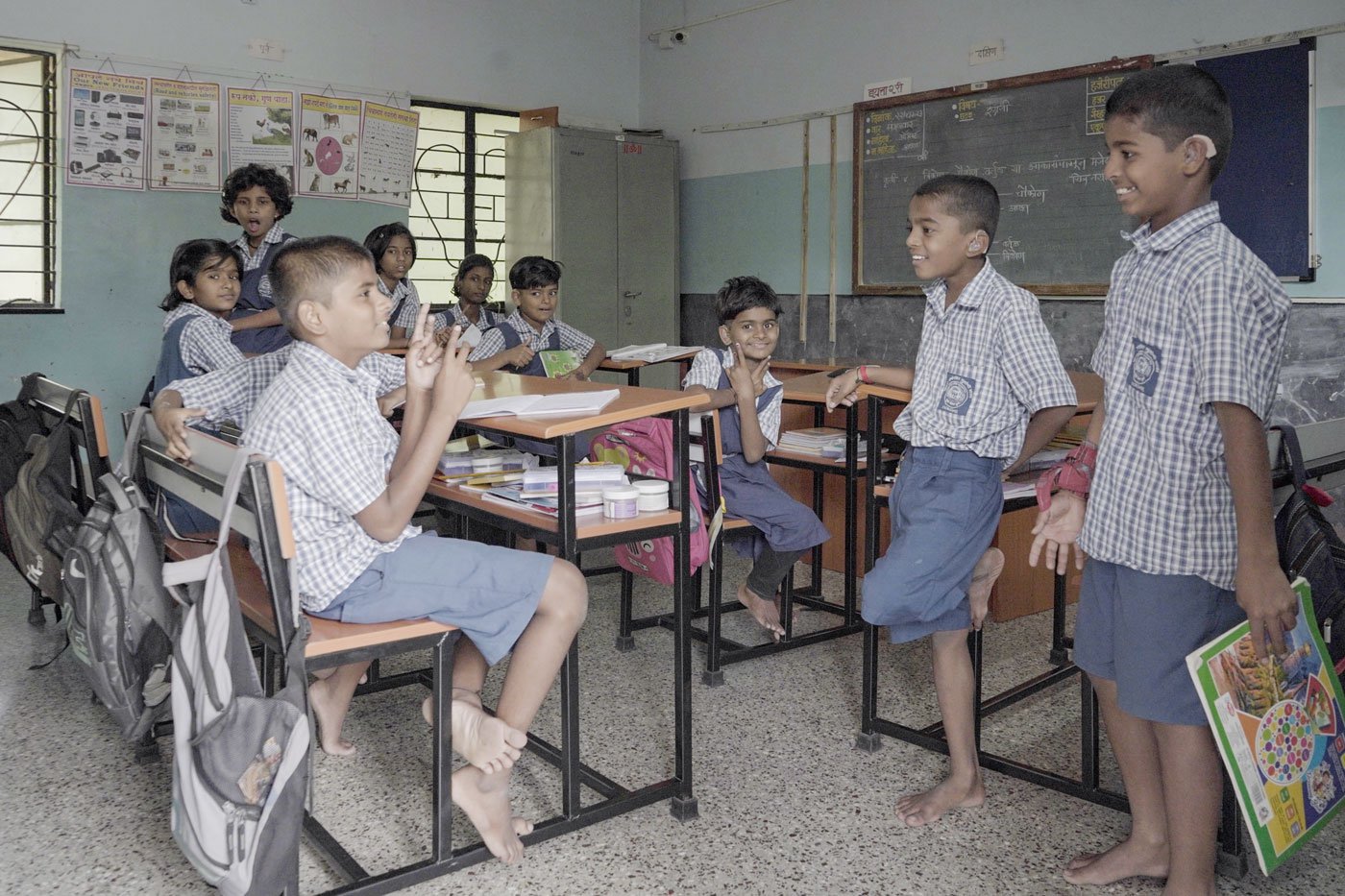
Children at the Dhayari School for the Hearing Impaired chat with each other. ‘Sometimes, children come up with their own sign,’ says Satyabhama Alhat, a special teacher working with the school
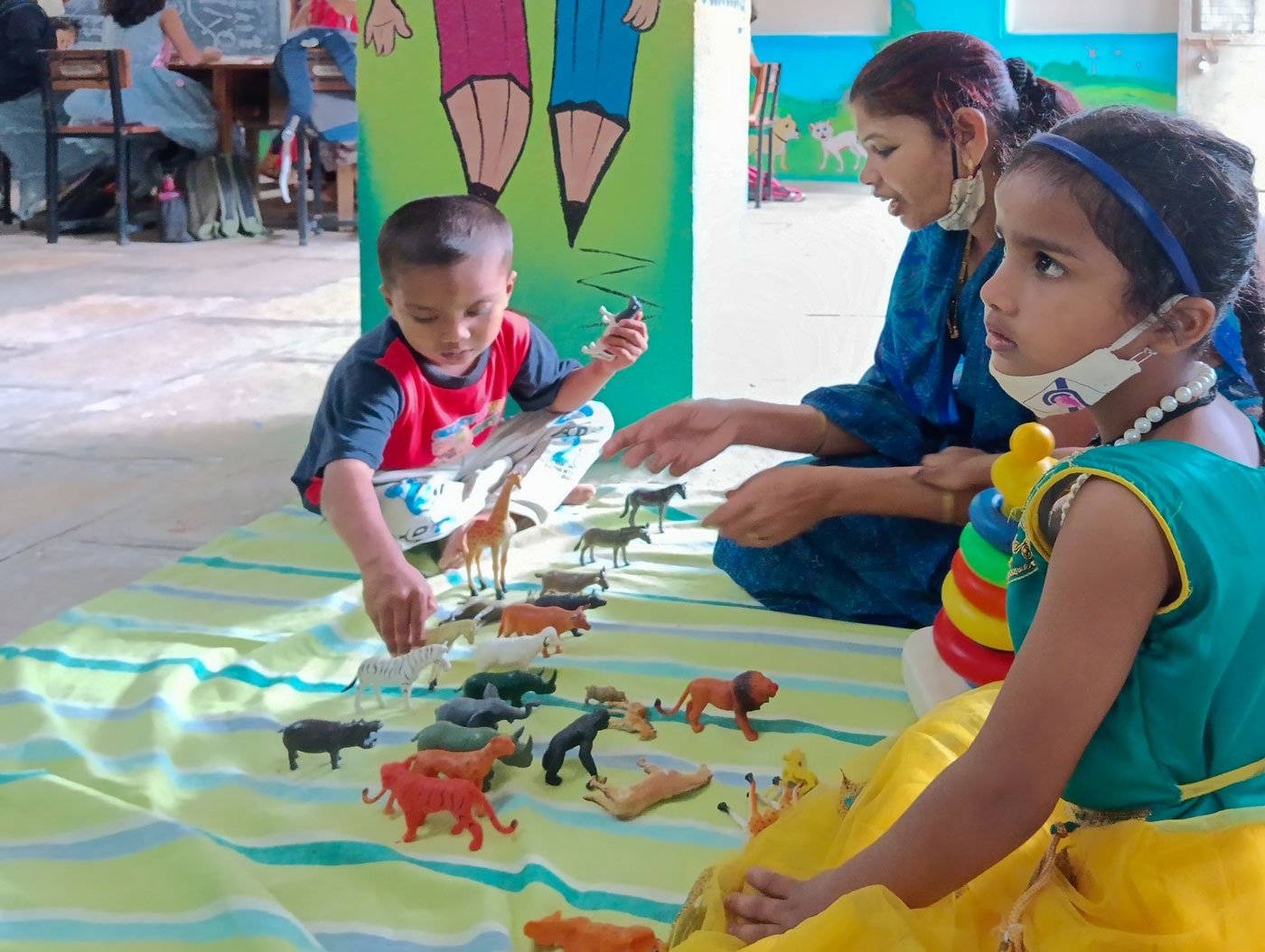
A hearing impaired child joined the hostel at the Dhayari school. Not yet five years old, he is learning the names of animals while playing with the rubber models
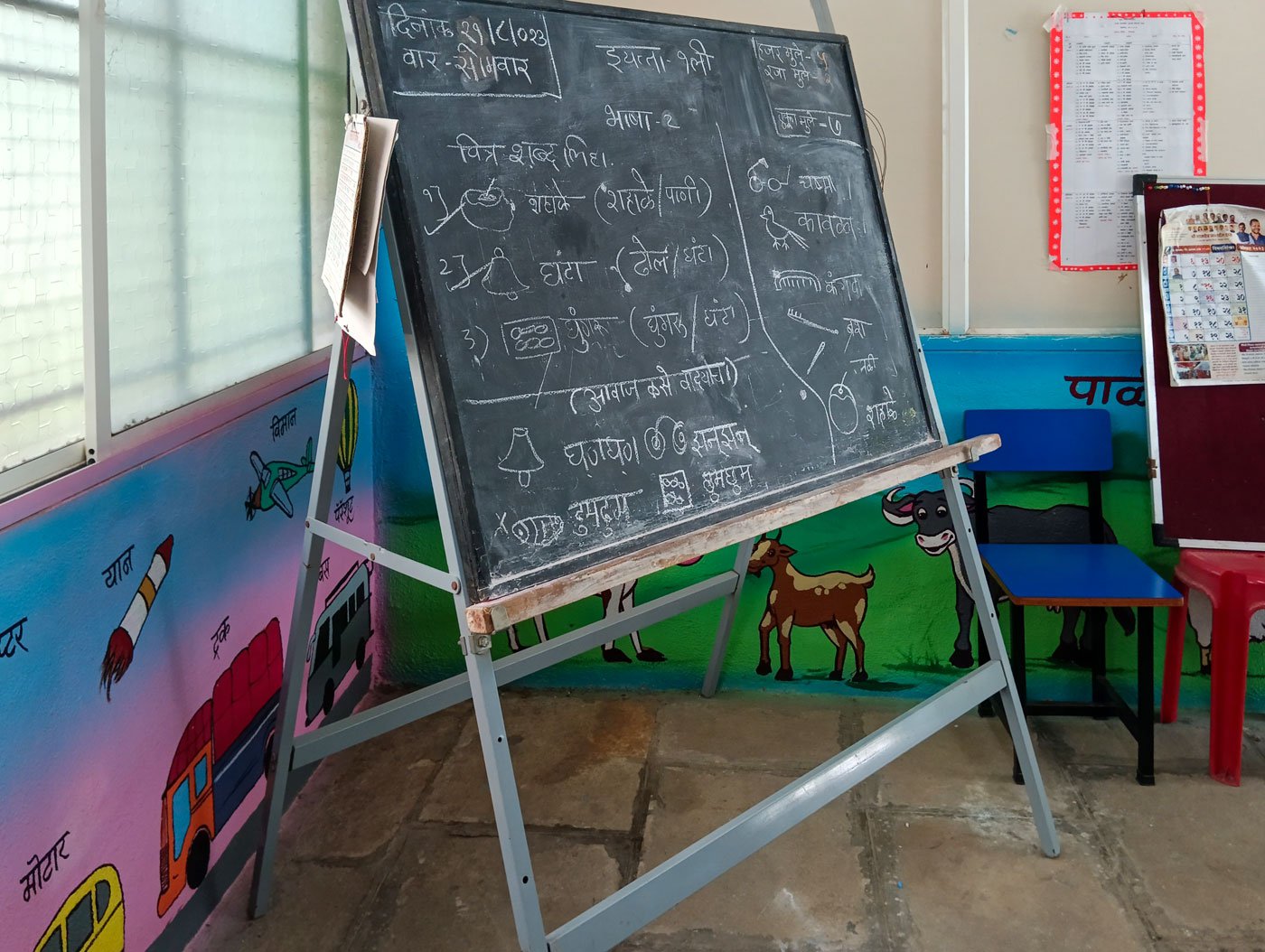
Teachers use a blackboard for drawing and writing words. Here Aditi Sathe has drawn birds and instruments at the Dhayari school
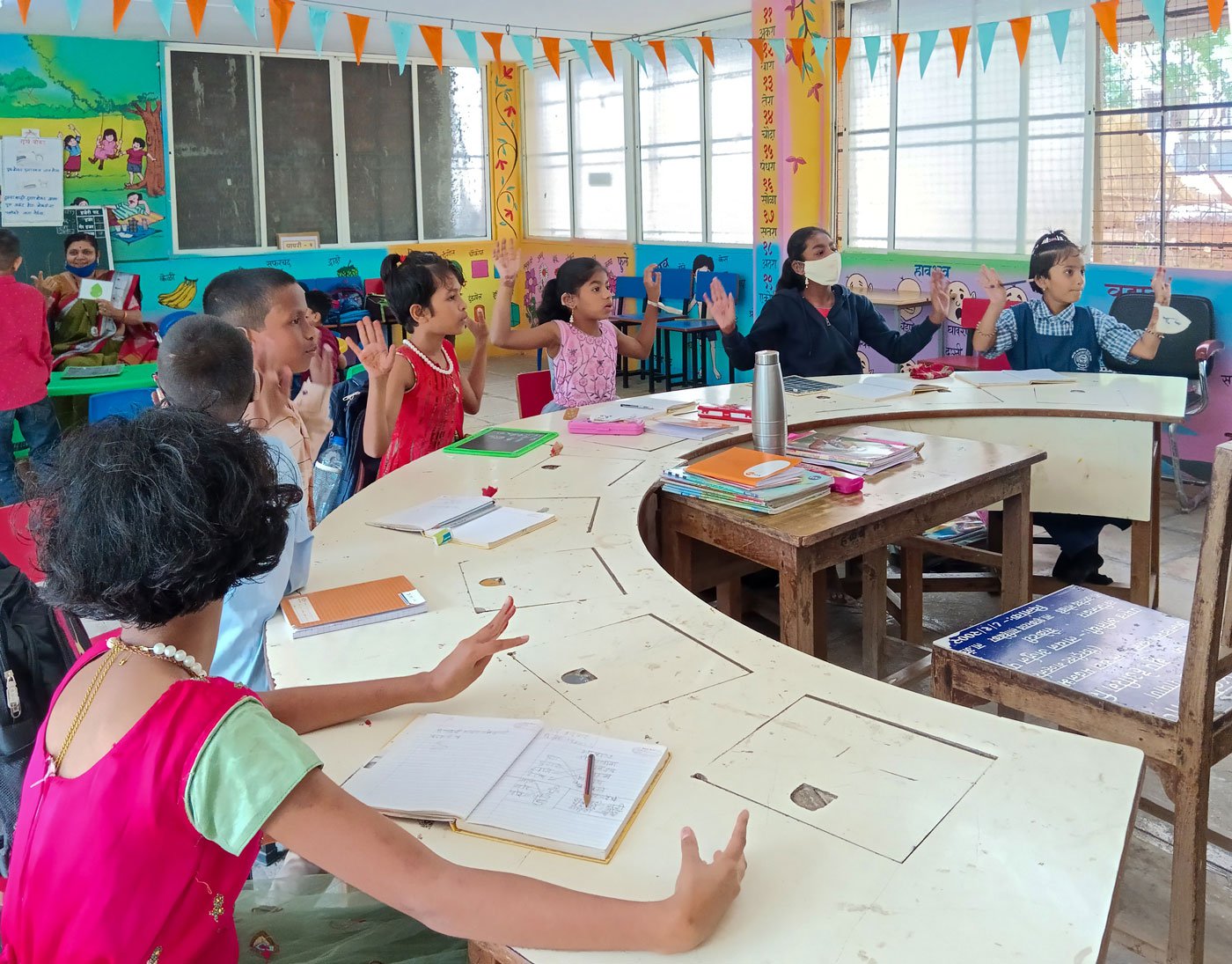
Sudents following their teacher’s sign and learning the word kaavla (crow) through actions
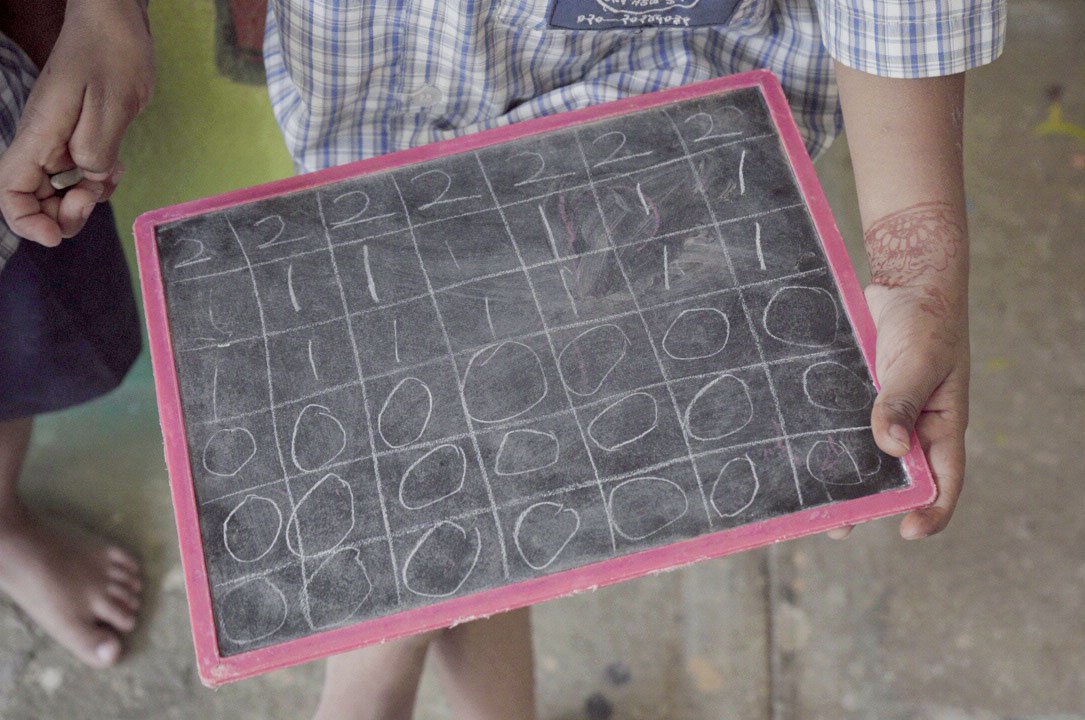
A child learning to write numbers
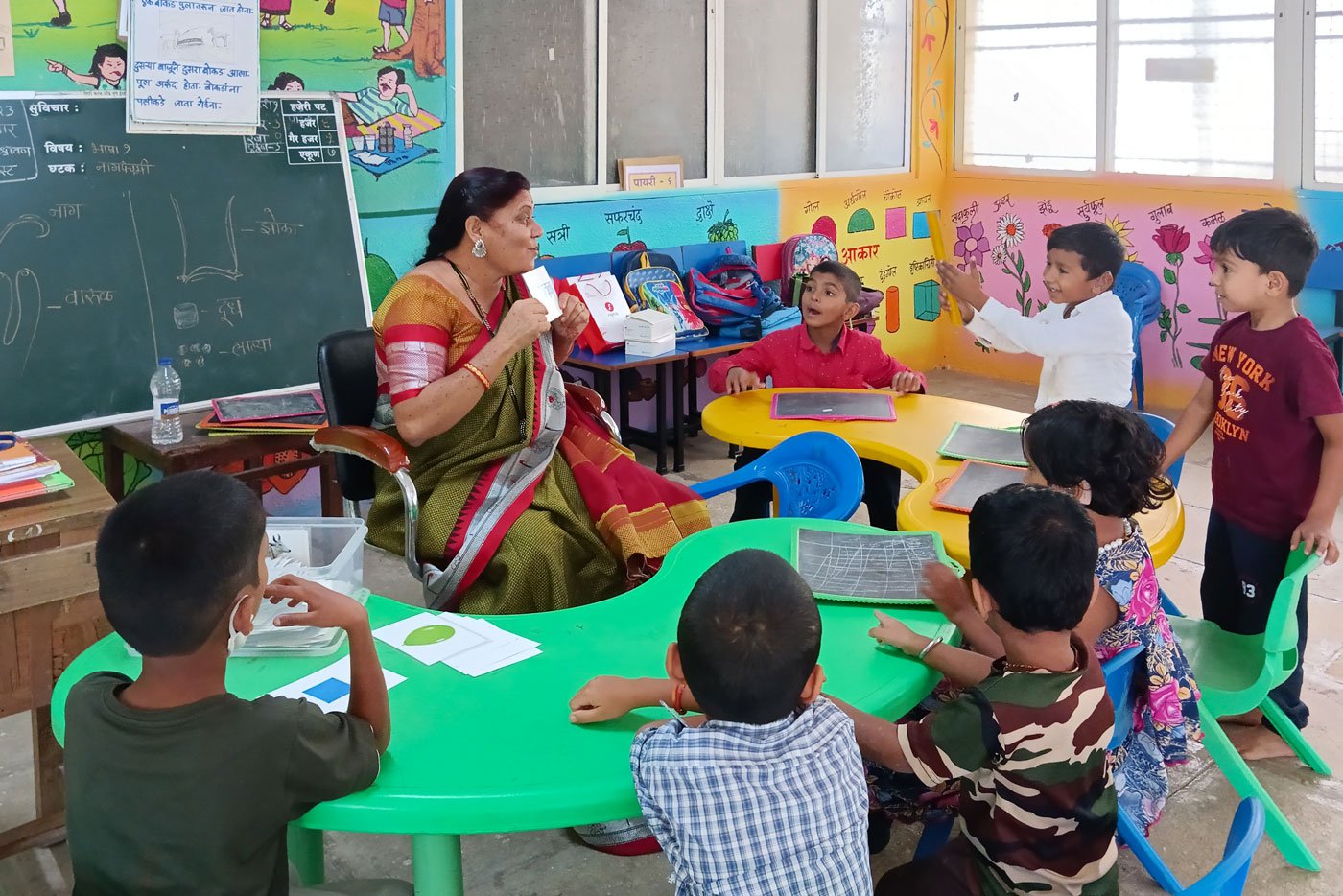
Sunita Zine teaching colours to the youngest class at Dhayari school
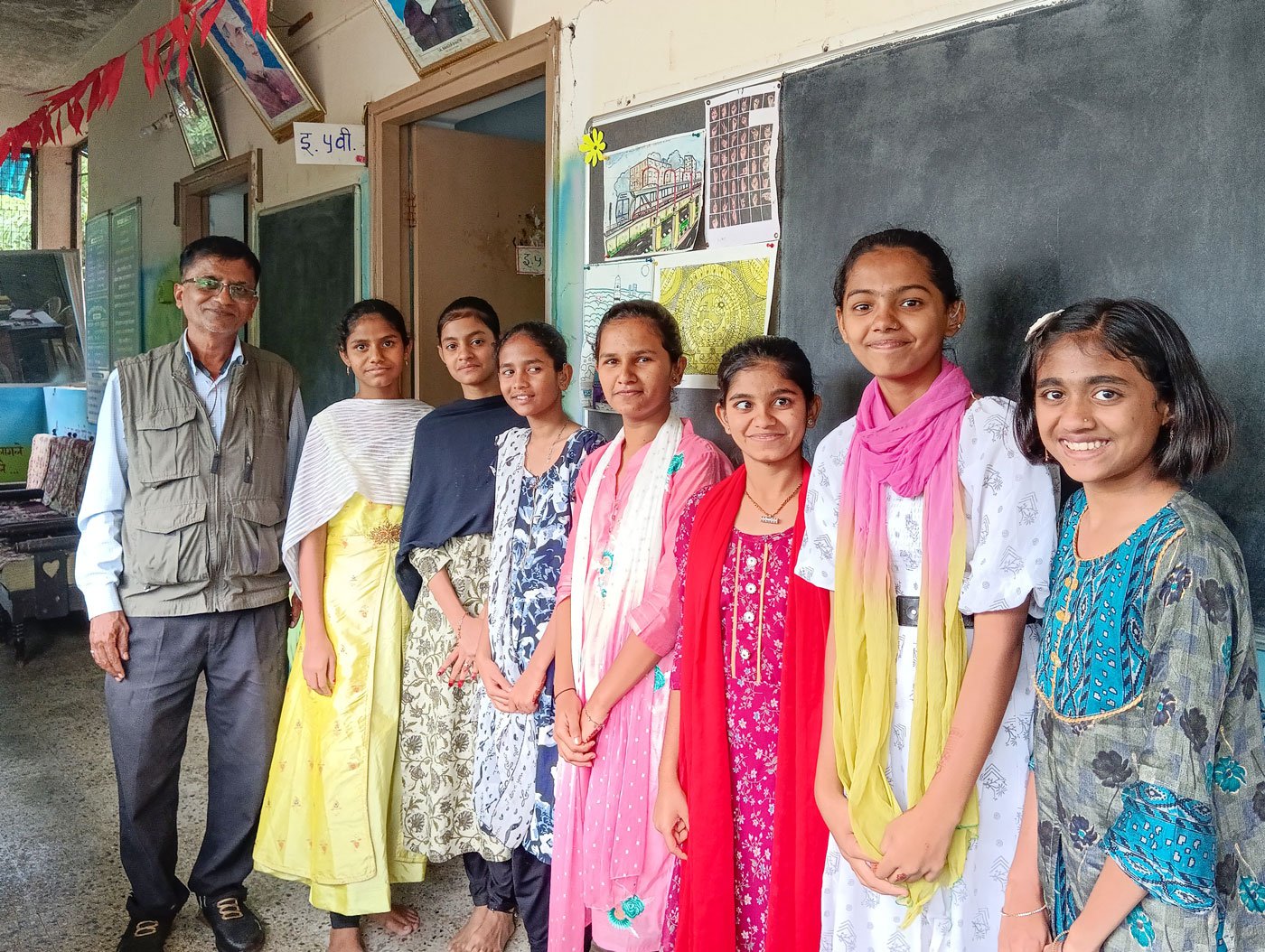
Students with Bairagi, their art teacher
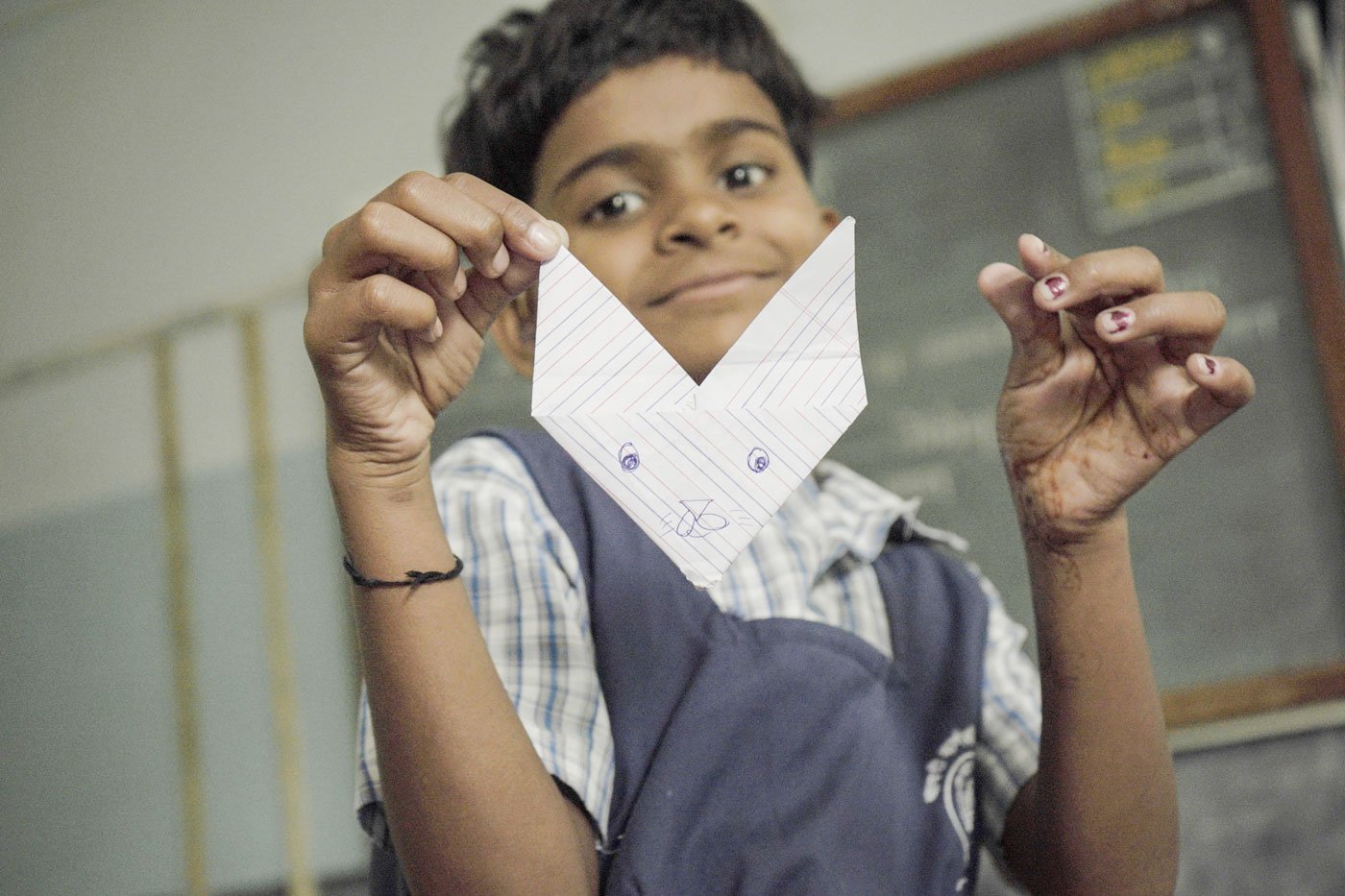
A child shows a paper bunny
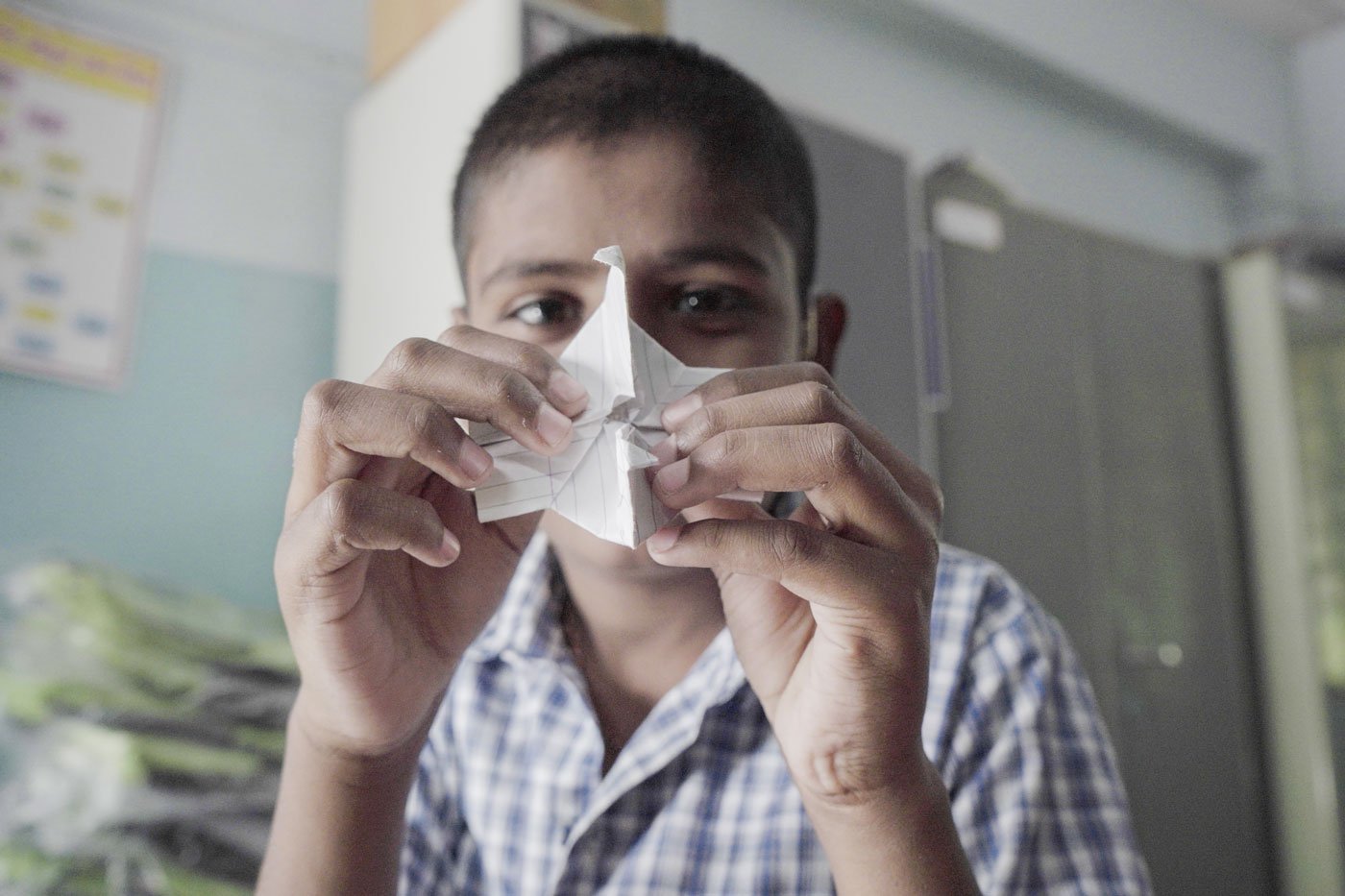
At Dhayari school, art and artwork are part of the curriculum
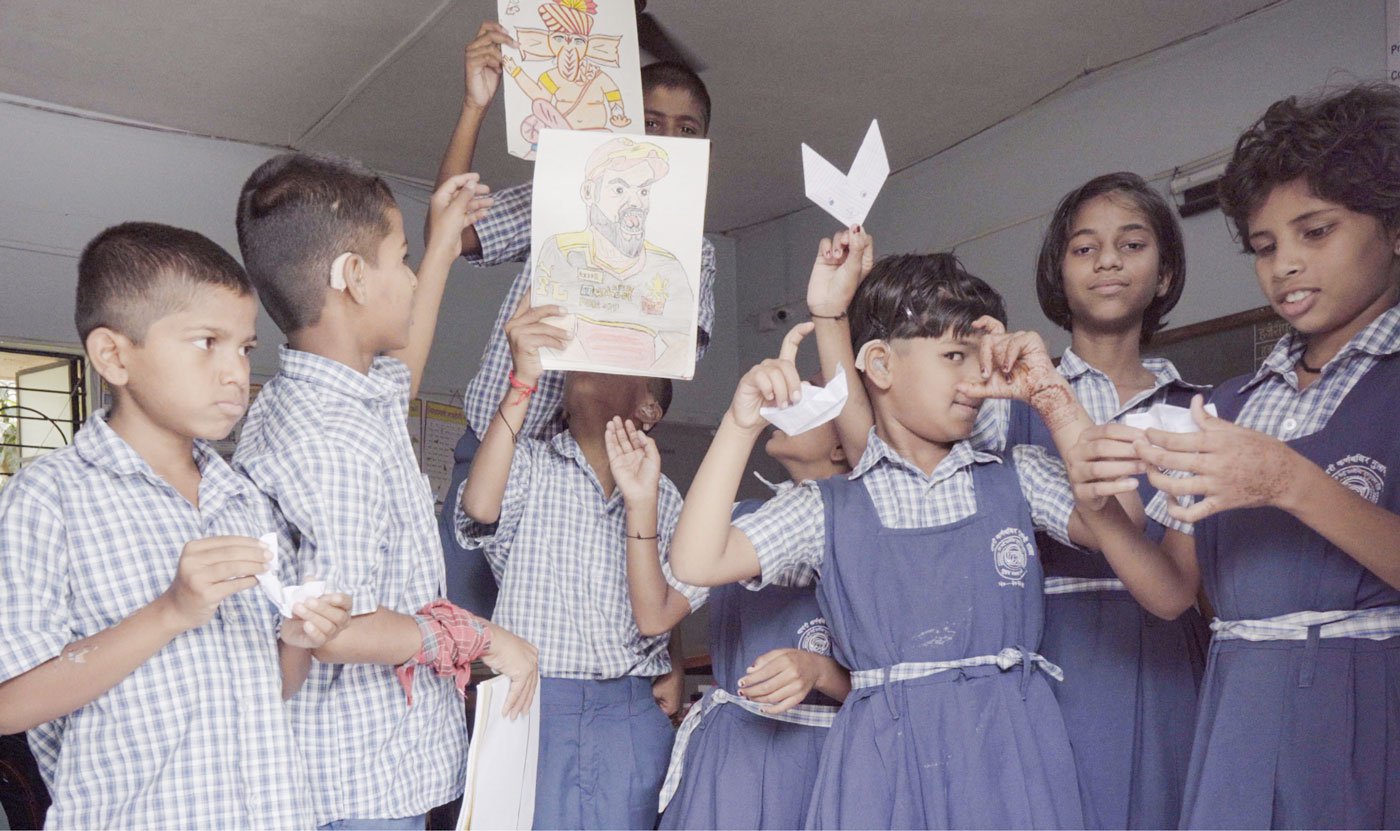
Children from Class 1 show paper bunnies,
paper boats and other artwork
